The following is a partial transcription (included content, unedited) of the pamphlet “Sketches of William Hicks, Abner Hicks, Jasper Hicks, George Harris, James Crews, John Earl – and something of their descendants”, written by Thurston Titus Hicks of Henderson, North Carolina, in 1926. I believe the transcription is a near-perfect copy of the original material, however any errors that appear in contradiction with the original text, are unintentional and the fault of myself, not the original author.
This transcription includes pages 1 and 2 and pages 29 – 48. Content transcribed includes:
– Title page and Introduction
– The Crews Family of Salem (from Gideon Crews Sr., through to the early 20th century generations.)
– The Residences of Our Two Grandfathers (descriptions and mode of living in the 19th century homeplaces of Abner Hicks and James Crews.)
– Three Daughters of John Earl (Detailed descendants list of of Sara Earl and James Crews, Mary Earl and Robert Jones, and Patsie Earl and William Kittrell.)
Thurston Titus Hicks, who wrote this pamphlet in 1926, was born on October 14, 1847, and died July 28, 1927 – eleven months and one day after he completed writing “Sketches.”
This document was written in an earlier era. The style, vernacular, punctuation, and consistency are clearly of another time. The man himself was a creature from the distant past, already, when he began writing this history of his ancestry. For this reason, the foregoing document may be very difficult for contemporary readers to comprehend. For that reason, I have taken the liberty of adding a section at the end of this document that includes:
– the family lineage in an easier to digest format,
– noting inconsistencies in the prose that might confuse contemporary readers, not familiar with the subject matter,
– noting and correcting errors in the original, where I was able to detect them.
– including editorial notes, where I felt I could clarify or contribute to the content.
In regards to the transcription, I have made as perfect a copy of the original as I was able. My notes and additions follow the transcribed version.
Sketches of William Hicks, Abner Hicks, Jasper Hicks, George Harris, James Crews, John Earl
And Something of Their Descendants, With comparisons of present conditions of living with those of sixty years ago.
By Thurston Titus Hicks
Privately printed, Henderson, North Carolina, September, 1926
(A revised and updated edition was printed in 1954.)
(Edits and comments as noted by Constance Hall Jones, 2013)
—
[Pages 1 and 2]
“People will not look forward to posterity who never look backward to their ancestors.”
— Edmund Burke
The facts and incidents herein contained were related to me by my parents in my childhood; and repeated to me by them and by my Uncle Edward N. Crews, reduced to writing and verified by them after I became a man. My brother Archibald A. Hicks found and verified the record references. His and my acquaintance with our large family connection enabled us to gather and preserve the incidents and stories. All the family to whom we applied contributed cheerfully whatever information they possessed of the persons and occurrences of which we write.
The records in the office of the Secretary of State at Raleigh show who were the original grantees of the lands of the Colony. Those in Oxford begin in the year 1742, when Granville County was formed.
I have seen the lists of soldiers of the Revolution from Granville County as published in the (Oxford) Public Ledger lately, and was surprised to read so many family names I have never heard; showing how people have departed and others have come and taken their places. The will of my great grandfather, William Hicks, made May 14th, 1796 probated at August Court, 1799 of Granville County, names as his devisees and legatees, in addition to his two sons, my grandfather Abner Hicks, to whom the lands were devised, and William Hicks, Jr., the following daughters: Mary Debrula, Anne Mathews, Martha Tatum, Priscilla Duncan, and Susanna Wilkins. None of these daughters or their descendants were known to my father who was born October 15th, 1828, nor are any of them known to me. This will was attested by Reuben Tally, John Hicks and Samuel Allen, Jr. Who were they?
The Earl of Granville granted to the said William Hicks on March 5th, 1749, two tracts of land aggregating 502 acres, “Situated on the waters” of Tabbs Creek. In those days all lands that composed a part of a watershed of a stream were described as located on said stream. Said lands were retained by William Hicks fifty years and devised as above stated to his son Abner. Abner retained the same fifty-five years and conveyed them to his youngest son, my father, Benjamin Willis Hicks, who thereafter owned and lived on the place for forty-four years, dying December 30th, 1899, leaving same to my mother for life and in remainder to his children. The place is now occupied and owned by my double ex-brother-in-law James T. Cozart and his two children, James T. Cozart, Jr., and Helen Cozart.
…
[Pages 3- 28 missing in my copy.]
[Pages 29 – 48]
The Crews Family of Salem
There was a Gideon Crews. We have not heard of his antecedents. He married Jemima Wicker. Their children were: Gideon Crews, Jr., Littlebury Crews, James Crews, Elizabeth Crews, wife of Lemuel Currin, Abigail Crews married William Daniel, and Mildred Crews married Hester or Easter and moved to Stokes County.
Gideon Crews, Jr. married Temperance LeMay. Their children were: 1. Franklin Crews, who married first _______ Ellis, sister of John Ellis, who bore him Alex Crews, James B. Crews, _______ wife of Thomas Norwood, William or Buck Crews. She dying, Franklin Crews married Hannah Hunt. Of this marriage were born Robert Crews, Wesley Crews and Eugene T. Crews. Robert and Wesley only died without issue. The other children of Gideon Crews, Jr., were Henry Crews, Patsy Breedlove, Harriet Sears, Lucy, wife of Solomon Cottrell.
Gid, Jr., in those days at times liked a timely dram. Our mother used to tell us that he would come to her father’s in a condition which made him merry and full of fun. The children would surround him when he was thus tipsey and ask him to tell them a story. Then he would tell them the story of the Irishman’s dog, viz.: “One day there was an Irishman in the woods hewing with a broad axe. His dog chased a rabbit. The rabbit came running right by where the man was hewing, and the dog in hot pursuit. The dog passed under the axe just as the man brought it down. It split the dog open from the tip of his nose to the end of his tail. The man was distressed at the accident, but being an Irishman and quick witted, he snatched up both halves of the dog and slapped them back together. The operation was so quick and the dogs blood so hot, that the two parts stuck together and grew, and the dog jumped out of his master’s hand and renewed the chase and soon caught the rabbit. But the man in his haste to save the dog had made the mistake to turn two feet up and two feet down, and the dog found that he could run on two feet until they got tired and then whirl over and run on the other two, and so he could catch anything in the woods, and could run forever.”
John Earl married Zebiah Watts. Their children: 1. Martha or Patsy, wife of William Kittrell. 2. Mary, wife of Robert Jones. 3. Sarah or Sally, wife of James Crews. 4. Jack Earl married Fanny Rice and removed to Tennessee. Sims died young.
John Earl’s sister Keziah married George Harris. Their descendants are listed herein. A little story has come down from the days of John Earl and George Harris. John was asked by George Harris on one occasion to send Jacks and Sims, his two sons, to help him to get up and shock his wheat, “All right,” said John and he sent them over early the next morning. They worked hard and finished just at dinner time, thinking the while what a good dinner they would have in Aunt Kizzie’s kitchen. Just then old man George said: “Boys, my wife always cooks to a mouthful and your mother cooks bountifully. Run home and get your dinners.” Their hearts sank within them, but they started home. After a few steps one said: “Uncle George, may we go by the orchard and get some apples?” Uncle George hesitated a moment and replied: “Eat as many as you want, but pocket none.” The boys went to the orchard, ate all the apples they could, took off their trousers, tied knots in their legs and filled them up with apples which they carried home. This story came to me from the Earle side of the house. Perhaps reading it here will be the first any living Harris ever heard of it.
To go back to the family of James Crews: James Crews, son of Gideon the first, born July, 1785, married Sarah, third daughter of John Earl.
The best impression we can obtain from the deeds is that the Gideon Crews, Sr., lands and the John Earl lands adjoined, around and just east, north and northwest of where Salem Church now is, three miles east and northeast of Oxford; and that grandfather James Crews bought them and more, comprising more than a thousand acres, and lived there until his death in 1875. His wife Sarah, was born in 1791, and died in 1863. Their first child, Allen Spencer, was born February 16, 1811, and died in infancy. Their next child was born May 15th, 1813, and was James A. Crews. He was called “Little Jimmie” or “Tar River Jimmie.” He married Martha Hunt, not a sister, but of the same family of which two sons, Joseph and George married his two sisters Martha and Susan. “Little Jimmie”, as he was called, was much of a man. He soon bought a fine farm on the south side of the Tar River near Minor’s mill and lived there until he was nearly 90, rearing the following children: 1. David G. Crews married Flemming, reared a large family and lived to be old. 2. Sarah A. Crews married William Lyon. They had three children: Kate who married James T. Cozart and died young, Ira who married James T. Cozart’s sister. Ira Lyon and wife have several children and are both living. 3. Lorena, who married Rogers, and afterwards R.G. Bobbitt, and is now a widow. She has two sons, Ira Rogers and Glenn Bobbitt. Sara A. Crews Lyon later married Rev. Thomas J. Horner of Henderson. They both lived to be nearly 80. He died first. 4. Robert T. Crews married a daughter of Kizaeh Stark. Robert lived to be old. They had no children. 5. Louisa Crews married William D. Mitchell, of Wake. About 1880 they removed to near Middleburg, in Vance County. Mr. Mitchell died at a good old age, about 1920. His wife still lives. They have the following children: Ed. D. Mitchell, W.G. Mitchell, Bunn Mitchell, Marvin Mitchell, and one who went to California and died leaving children there. 6. Edward H. Crews married Laura, daughter of Rev. Thomas J. Horner. She died. He removed to Rocky Mount, N.C. and there married again many years later. He is dead. No children survive him. 7. Caroline Crews, called “Callie”, married John Smith. They had three children: Lonnie Smith, who long lived and does yet, in Oxford, N.C., Lennie Smith of Oxford, Maude married Mr. Jackson. They all have families. 8. Leroy Crews, married, lives at Thelma, in Halifax, members of his family unknown to me. 9. Flora Crews married Best; lived near Goldsboro, died, children unknown to me. 10. Albert A. Crews, youngest son of James A. and Martha Crews, married Miss Stark, no children. Lives in Oxford. 11. Rebecca Crews. Now living, never married.
James A. Crews was a good man, a Christian. He loved the church and worked much in its ranks. I have never heard anyone speak evil of him. He prospered in business. He farmed on a large scale, and made his boys work. Archibald Hicks tells a good story that Uncle Jimmy told him. One night a youngster of the neighborhood went to Uncle Jimmy’s visiting, and stayed and stayed. Probably he wished to look at, if not say something to the handsome girls of the family. Finally his visit became somewhat annoying by its length and bedtime approaching, Uncle Jimmie said: “well Johnnie, I reckon you had better go on home now; it’s getting late.” Johnnie left. The next time Uncle Jimmie saw Johnnie it was at a neighborhood mill. Uncle Jimmie: “Howdy Johnnie.” Johnnie: “I wish I had a bengal of powder; I’d blow you to hell in two minutes.”
The second child of James and Sara Earl Crews was Mary E. Crews, born December 2nd, 1815. She married William O. Wright, a brother of John W. Wright and uncle of Mr. George W. Wright. They removed to Tennessee and had children there, who, in 1875, received their share of the estate of James Crews.
Rebecca A. Crews, third child of James and Sarah Earl Crews, born April, 1817. She married James Cheatham. They lived about five miles southeast of Oxford, where their grandson, Hamlin Cheatham now lives. James Cheatham died in 1865, heart broken over the result of the war. His wife Rebecca died in August 1888. Their children and descendants were: 1. William A. Cheatham, who married Asenath F., daughter of Lewis Parham. Their children were Elizabeth, who married J.H. Goodrich, of Henderson, and died leaving a son Ben and a daughter Lily. Benjamin H. Cheatham, who died of typoid fever at the age of 22, unmarried, about the year 1880. Ernest Lee Cheatham, who died without issue. Adolphus Whitfield Cheatham, an Episcopal minister of Southern Pines or Pinehurst, N.C.
The second child of James and Rebecca Cheatham was Sarah, who married Albert C. Parham, son of Lewis Parham. She died in August 1875, of typhoid fever, leaving seven small children, Alonzo W., Edwin T., Cornelius H., Percy C., who was shot by accident on Thanksgiving Day, 1906, leaving a wife and several children, Mary Tazwell Parham, who married ________ Watson and died young, leaving children, James, who married Miss Hood and has several children, and Frank Earle, who is a lawyer and lives in New York and has been twice married.
The third child of James and Rebecca Cheatham was David Thomas Cheatham. He went through the Civil War with my father. They were each other’s nearest neighbor many years and were ever good friends. He married Annie, daughter of Thomas Reavis, of near Henderson. He owned the Cheatham Mill for a generation until it was thought gold was found near it. Then he sold it and the farm for a good price and bought the Memucan H. Hester farm near Oxford, and lived there until his death at more than eighty in 1915. His wife survived him several years.
The children and descendants of D.T. and Annie Cheatham were: 1. Claudius Cecil Cheatham, a tobacconist of Youngsville, N.C. He married Cora W. Winston, of Youngsville. Their children are: Claude C., Jr., Winston Thomas, Clarence Burton, Robert E. Susan Caroline and Lurline Cheatham, deceased. Claude C. Cheatham died in July, 1921. 2. Fred A. Cheatham, a tobacconist, of Youngsville, N.C., married Maude Freeman. Their children are: Jessamine, Elizabeth, Maude and two who died in infancy. 3. Thomas Flavius Cheatham, tobacconist, Louisburg, N.C., married Bessie Staley. Their children: William Staley Cheatham, Thomas Harvey Cheatham, deceased, and Florence Cheatham, deceased. 4. Robert Hubert Cheatham married Anne Meeder, deceased, left one child, David Thomas Cheatham. 6. James Amis Cheatham married Rosa Lee Parish, Richmond, Virginia; no children. 7. Joseph Gibbs Cheatham, deceased, unmarried. 8. Lucy Catherine Cheatham, deceased. 9. Eva Rebecca Cheatham married William B. Smoot. They have two children, William B. Smoot, Eva Cheatham Smoot. 10. Annie Belle Cheatham married Thomas Crawford. They have three children, Thomas B. Crawford, Jr., James Walker Crawford, and Annie Caroline Crawford. 11. Mattie Roberta Cheatham married Luther S. Farabow. Two children, Lucy Catherine and Pearl Elizabeth. 12. Pearl Elizabeth Cheatham married Sidney R. Abernathy; two children, Birdie Eloise and Lucy Catherine.
The fourth child of James and Rebecca Crews Cheatham was James Theodore Cheatham. He, as his brothers William and D. T., fought through the War of the Confederacy. He was captured with his two nearest neighbors I.C. Bobbittt and Fred Hamme, near the end of the war and kept a long time in Elmira, N.Y., military prison. James Theodore Cheatham acquired his father’s farm, married Elizabeth Hamlin, of Petersburg, Virginia. Her sister had married Augustine Landis, a merchant of Oxford. “Thee” Cheatham and wife reared a large family as follows: 1. Virginius T. Cheatham married Elizabeth Leach. Their children: Leonard, Grace, Virginius, Bessie, Albert, Lucile, Edna, John and Burton. 2. Clifton B. Cheatham married Lala Rainey Kittrell. Their children: Sallie, Charles, Elizabeth, Lucy Crudup, C.B., Jr., Charles Hamline, George Kittrell, William and Mary Cheatham. 3. Sarah C. Cheatham married Percy Parham. He is dead. Their children: James Theodore, Carroll, deceased, Paul Cullum, deceased, Earl, Dorothy. 4. Charles Hamlin Cheatham married Hettie Osborne, who died; later married Lucy Roberts. Children: Bettie Maie, Hamlin, Jr., Graham and Gordon, twins. 5. Rebecca Cheatham married S.W. Ferebee. Their children: Alice, S.W., Jr., Elizabeth, James Theodore, Rebecca, Willoughby, Hamlin, Emmit, Francis, Billy Edward. 6. Mary Louise Cheatham married R.A. Shirley. No children. 7. Olivia Burton Cheatham married J.H.B. Tomlinson. No children. 8. James Theodore Cheatham married Mary Johns. Their children: Mary Johns, dead, James Theodore, Jr., Mary Eccles, Martha Elizabeth. 9. Bessie Gibbons Cheatham married John R. Allen. One child: John R. Allen Jr., 10. Tazzie Cheatham married L.S. Baker. Their children: Shirley, Samuel, and James Cheatham Baker.
Martha M., the fourth child of James and Sarah Earl Crews, was born June, 1820, and married Joseph Penn Hunt. The name Penn appears often in the Hunt family. The most reliable information on its origin here is: John Hunt came to Granville from Virginia. His son John Hunt married Francis Penn, a sister of the signer of the immortal Declaration of Independence. A son of John and Frances Penn Hunt married Sarah Longmire. Joseph Penn Hunt was one of their sons. He married Martha Crews. David, a brother of John Penn Hunt, had two daughters, Martha, who married Little Jimmie Crews, and Charity, who married Reavis and lived near Henderson.
The children of Joseph Penn Hunt and Martha Crews Hunt were: 1. Sally, wife of James B. Crews, who had several children: Cora Ellis, Mrs. N.W. Hicks, C.F. Crews, Fred Crews. 2. James, who died in the Confederate Army. 3. Susan, wife of John H. Breedlove. Their children: Laurie G., who married Rebecca Rice. They have two children, Mildred and Evelyn; Joseph Penn Breedlove married first Bessie Bassett, and second, Lucile Aiken, and had two children, Joseph and Caroline. He has long been librarian of Duke University. Ethyl Breedlove unmarried. 4. Celestia Hunt married I.H. Breedlove. Their children: Oscar Breedlove married Sadie Harris, Calvin Breedlove, who married Lena Patterson. Their children: Joseph, Roy, Neely. Clarence Breedlove married Maggie Baily. Eula Breedlove who married Robert Hart. He died. Their children: Frank, Robert, Alley, Cooper, Mabel, Selma, James. Ada Breedlove, unmarried. May Breedlove married Samuel Holman. Alene Breedlove married Carl Hester. Their children: Josephine, Carl T., Marion and Dorothy Hester.
- The fifth child of Joseph P. and Martha Crews Hunt was John L. Hunt. He was a merchant at Kittrell; married Cora Rainey. Three children were born to them: John Leigh, Cora and Rosa Beverly Hunt. Cora Rainy Hunt died and John L. Hunt married her sister Rosa Raney. John L. Hunt soon died. 6. Ira T. Hunt, son of Joseph P. and Martha Hunt, was a partner of John L. Hunt and married his widow, Rosa Hunt. They had one child, Thomas. 7. Ella was the seventh child of Joseph P. and Martha Hunt. She married Dr. Fuller, of Person County. Their children: Elbert Earl, Cora Lee, Carrie and Willie and W. Fuller. 8. David N. Hunt, the eighth child of Joseph P. and Martha Hunt, married his first cousin Adelaide Hester. They live in Oxford, N.C. He is a great lover of the services of the sanctuary and was a R.F.D carrier on route five from Oxford for about 25 years. Their children: Joseph Penn, William Gibbs, Raymond, Otis Kilgo, Earl F. and Lula Hunt. Joseph P. Hunt’s principal business was farming, but he was an expert carpenter and assisted in building the State Capital at Raleigh. He and his wife lived to be old, dying in 1880 and 1881.
- The fifth child of James and Sarah Earl Crews was Elijah Thomas Crews. He married Mary, daughter of Asa Parham, when she was less than fifteen years of age. He died at 55 in the spring of 1881. She lived to be 83. They had many children: 1. Haden W. Crews, who married Elizabeth, daughter of John B. Hicks, and he and his brother Norfleet Crews made more clear money farming than any farmers I know. He died in March, 1924, age 76, leaving one child, Dr. N. H. Crews of High Point, N.C. 2. Herbert E. Crews, who married first Laura Fullerton, who bore him several children. 2. Miss Weaver Wester, no issue. 3. Miss Howell, no issue. 3. Miss Delia A. Crews, unmarried. 4. Rufus T. Crews, who died in 1899, unmarried. He was a graduate of Trinity College under Dr. Craven’s Regime. 5. Mary Crews, called Mollie, who died in her youth, unmarried. 6. Norfleet G. Crews, who was adopted by his uncle Edward N. Crews, married first, Victoria Burroughs, daughter of J.E. Burroughs. She dying, he married Charlotte Marrow, daughter of Drewry Marrow. They had nine children. Norfleet died in 1919. He was sole devisee of his uncle Edward N. Crews and his wife and added largely to the same by thrift and diligence. The children of Norfleet and Charlotte are: Eloise, widow of T.L. Fishel. 2. Edward N. Crews. 3. N. G. Crews. 4. Samuel B. Crews. 5. Mary Delia Crews. 6. Martha Eugenia Crews. 7. Daniel M. Crews. 8. Lottie M. Crews. 9. R.T. Crews. Samuel F. Crews, seventh child of E.T. and Mary Crews, married Elizabeth Burroughs. Children: Fletcher, Elizabeth, wife of Julian Glover, Harold, Dorothy and Geraldine Marguerite.
- The sixth child of James and Sarah Earl Crews was Edward N. Crews, born September 19th, 1824. He married Martha, daughter of Asa Parham, and lived a mile west from Dabney and three quarters of a mile northeast from his father. He bought one of the poorest farms in the country and improved it until it became one of the best. Edward N. Crews was a “hustler”, an enthusiast. He specialized in being a good farmer, a good Democrat, a good churchman, and a good liver. If one went to his house to get something good to eat, “he didn’t miss it.” If he depended on him for a church or a party contribution, he was not disappointed. He was almost sure to attend church or party conventions and notable occasions. Though my father’s man Bill was overpersuaded by his wife to go to E.T. Crewses at once after Lee’s surrender he went to Uncle Ed’s next year and stayed about 25 years. Bill’s son lives there now. E.N. Crews was one of the first of his section to start the making of flue-cured tobacco and one of the first to introduce Jersey cattle. He went to Raleigh when the best fresh about Oxford and Henderson sold for $20.00 and paid $100.00 for a Jersey heifer. When she began to give milk she was the talk of the neighborhood. Uncle Ed invited his Brother Jeems” to come down. That night at the table Uncle Ed said: “Brother Jeems, how do you like that milk?” Uncle Jimmie: “Very good, but I think I’ve drank as good at home many a time. “Uncle Ed was somewhat set back, and next morning at breakfast he had Aunt Martha provide a glass of pure Jersey cream for Brother Jeems. As the breakfast proceeded, Uncle Ed: “Brother Jeems, how do you like that milk?” Little Jimmie: “Very well, but I think I’ve seen it as rich at my house many a time.” Uncle Ed: “It ain’t so! It ain’t so! It’s every bit pure cream!” and then he laughed at having caught “Brother Jeems”. This joke is all the better to those who remember the immense voice of Uncle Ed and the zest with which he talked and laughed. Uncle Ed enjoyed the companionship of his friends. He was well known in Vance and Granville, and many good stories were told of him, by him and some at his expense. He acquired a thousand acres of land, more than thirty-thousand dollars in money and never lost any. His estate he left to his wife with the understanding that she should leave it to their dearly beloved adopted son and nephew, Norfleet G. Crews. This Aunt Martha did soon after. They both died in the fall and winter of 1899. Norfleet more than doubled the estate in value in the following twenty years, dying in middle life in the year 1919. Edward N. Crews was a man of strong prejudices and an emotional nature, but he had the respect of all and was beyond question a fine and notable man.
- The seventh child of James and Sarah Earl Crews was Isabella Jane Crews, born August 24th, 1829, married Benjamin W., youngest son of Abner and Elizabeth Harris Hicks, and died September 4th, 1913. Her descendants under name of my father. She was on good terms with all her neighbors. Nobody ever heard anything she told or repeated to the discredit of others. She never crossed or quarreled with my father. I never heard of her asking him for money or having a pocketbook. He did the buying and paying of bills. She was entirely loyal to the Crewses, yet she was on the best terms with all of the Hickses. In the establishment and maintenance of a home and rearing a family she did her part nobly and well. She survived my father nearly 14 years. Her body is lying by the side of his. If any one ever had better parents than the children of my parents he was indeed fortunate.
- Susan, eighth child of James and Sarah Crews, born January 7th, 1832, married George W. Hunt, brother of Joseph Penn Hunt. She outlived her parents and all her brothers and sisters, dying in April 1918, aged 86. Her husband was a substantial citizen and was executor of the will of his good friend and neighbor Col. Richard P. Taylor, who died in 1870. George W. Hunt died in the prime of his life in 1876, leaving a large family. His widow survived him 42 years. Their youngest son, Edward A. Hunt, still owns the family home and keeps alive the best traditions of the family.
The children of George W. and Susan Hunt were: 1. Emma, married Joseph B. Parham. They owned and lived at the place from which Robert T. Taylor sold a hundred slaves at one time to Judge Rux of Mississippi. Children of Joseph and Emma: Hattie, who married Thomas V. Rowland and later J.K. Plummer, Thad B. died leaving several children, Mamie, who never married, Cary, who has several children, Mattie married Hobgood. They have several children. Blanche Parham married Junius M. Rowland. [Children:] George W. Parham and Elvin Parham. 2. Walter L. Hunt, second child of George W. and Susan, married Jane Haliburton, of Durham. They moved to Asheville. Both died leaving several children, all deceased. 3. Lelia Hunt married Junius W. Young and died without issue. 4. Junius Penn Hunt married Julia Russell of Virginia. Their children: Florence, Lillian, Helen, wife of Theodore Parham, Dorothy, wife of E.S. Merritt, George Penn, and Elizabeth. Junius Penn Hunt has long been one of the most intelligent men of Granville, a lover of his church, a good citizen. His daughter Lillian lives in the Adirondacks. Dorothy and husband are in the Philippine Islands. George Penn Hunt, a graduate of the State University, is employed in commerce in China. 5. Sarah Hunt, unmarried, lived for some time in Cuba. 6. Florence Hunt married Edwin G. Barnes. They died leaving a daughter, Lottie, wife of Rev. R.J. Parker. She has been a foreign missionary and has lived on the Mexican border. They now live in Memphis and have several children. 7. Carrie Hunt married Charles F. Crews. He died of typhoid fever while Clerk of the Superior Court of Granville County. They have one son Roy, and four daughters. 8. Susan (C.) married Joseph H. Gooch. She died, leaving one child, Janie, who graduated from college in 1926. 9. Edward A. Hunt married Elizabeth Moyer, who died leaving two sons. Edward A Hunt later married Lennie Ward, of Greensboro.
Susan C. Hunt possessed all the striking characteristics of the Crews family. From childhood until death she was a devoted member of Salem Church. She loved her family, and they were drawn to her by the tenderest affection. Hers was a long life of peace and reasonable happiness. Her memory is blessed.
- The ninth and last child of James and Sarah Earl Crews was Melissa F. Crews, born January 3rd, 1835, married Rev. William S. Hester, and died in his arms while alighting from the train at Huntsboro, near Salem Church, November 1897. There were born of this marriage: 1. Nora, who married Rufus J. Aiken. This couple had many children, now living. Both parents are dead. 2. Adelaide, who married her first cousin David. N. Hunt in December, 1883. 3. Lula, who married Rev. J.M. Rhodes. No children. The other children of Rev. W.S. and Melissa F. Crews Hester were: Benjamin Otis Hester, who lives in Texas, and Marvin, a Methodist Episcopal minister. I do not know their descendants. Mrs. Melissa Hester was a merry, happy, laughing woman, a lover of the church and everybody. She was largely influential in inducing her father to buy the organ at Salem Church, and she was for a generation its organist and the church’s principal chorister. She was a whole-souled enthusiast in religious and domestic life. She came from the Methodist Episcopal Annual Conference at Raleigh with her husband. I talked with her on the train from Youngsville to Henderson. An hour later, at Huntsboro, her spirit left the scenes and friends she loved so well for the life eternal.
James Crews, the father and head of his large and honorable family, lived to be 90 years of age, dying in September, 1875. I have heard my mother say he started life in a house with a dirt floor. Grandpa Crews could read the Bible a little and write his name, but he had no education in books. In his long life he became a very well informed man. No one ever thought him conceited or proud, but he enjoyed the prosperity he wrenched from nature. A few acres at a time, he acquired more than a thousand acres. At the time of the Civil War he owned more than fifty slaves. I never heard of his mistreating or abusing one. He was born poor and lived to be rich, but he never spent a quarter without first considering whether what he would get would be worth a quarter. A photo taken some years before his death shows him holding in one hand, barely perceptible, a quid which he intended to chew some more. My mother showed it to me. A good story of his thrift and enthusiasm for work is remembered in the family. The first day of the year he waked Tom and Ed and two of his stoutest slaves, before day, telling them to go over to the “new ground” and cut down that largest oak tree by sunrise and wake up the neighborhood, and start the year right. I can see him standing on the porch as the day dawned listening to the ring of the axes of those stout fellows through the frosty air; and what a thrill he felt as he imagined it would wake up Abner Hickses crowd to the east, Bob Taylor’s to the South and Sam Moss and Cooper’s quarter to the north. Soon the tree fell and such a noise it made! But the four men who felled it just as the sun was rising set up yells that could be heard as far as the fall of the tree. They then went home to breakfast, expecting to receive the congratulations and smiles of a father and master; but he was “mad as a hornet.” “What in the world did you holler for? They will think you were coon hunting or were bragging on what you had done.” His grandson, Hayden Crews told me of selling a fine horse to a prominent citizen, who became dissatisfied and sent for Hayden to come and trade back. Hayden went by Grandpa’s, told him all the treaty and trade and asked him for advice. Grandpa: “Tell him you don’t make children’s bargains.” At his funeral Rev. Lewis K. Willie told of his last words. He had been given some medicine in which some of the sugar, not having dissolved, lodged on his tongue. He wiped it off with his finger and said to a child standing by: “Did you ever see anybody spit out sugar before?” Then he died. Thousands of times since have his children and grandchildren and neighbors thought and talked pleasantly of the things he did and of the long and successful life he lived.
THE RESIDENCES OF OUR TWO GRANDFATHERS
Think of the number of dwellings in Durham and Granville and Vance costing ten thousand dollars or more! My father used to say it wasn’t worth while to build much of a house for the little time we had here, and that “the Father of the Faithful” thought a tent sufficient. As I recollect them, the dwellings in which my two grandfathers, Abner Hicks and James Crews, lived and reared their large familes were much alike. Bouth fronted the southeast. The westerly end of each, a story and a jump, with a second shed room in the rear was built first. As more room was needed for the growing family, lower and upper rooms were added on the northeast ends connected with the attic and shed room in the rear. Then a long porch was built all across the front of the Crews house, but only in front of the old part of the Hicks house. Neither one was ever painted. In my opinion, at prices prevailing from about 1800 until just before the world war, either one of those houses could have been built for about $600.00. There was a current opinion in that day that painted houses were taxed much higher than those unpainted. One wonders if that had anything to do with the unpainted condition of these two ancestral homes. The girls and their guests, if any, were packed away in the shed rooms downstairs, the boys in the attics. One of the big rooms was the parlor and the other the living room occupied by all the old folks. The windows! They were so little! I doubt if they were ever raised. And the doors were seldom closed in the daytime. And such fireplaces! Wood about five or six feet long could be burned in them. In those days people stayed in the house but little in the day. I’ve heard my mother say that many a time on Monday mornings her mother would poke her head in the shed room, quote an old saying: “Get up girls! Get up! Here it is Monday morning, tomorrow Tuesday and next day Wednesday! Half the week gone and nothing done!” My mother said when grandfather saw one of them reading a novel and was told what it was he would say, “A made tale.”
These old houses stood and served large families for near a hundred years. My father pulled his down in 1868 and moved into the oak woods where the soil is gray and the shade is good. He used the shingled on the old house to cover the stables and the outhouses at the new place. They were drawn shingles, of heart pine, put on with wrought nails, the exposed parts worn half in two. We just turned them over and they were better than any we could get, but in about forty years they were worn so on the other side that they had to be discarded. There was a great big cellar under the whole of the Crews house, entered by a door and stone steps from the north end. In that cellar the family eating was done. They had to go there and carry the dishes and food there via out of doors, three times a day. The kitchen was at least 50 yards away. At Grandpa Hicks’s they ate in the west room, which was indeed a roomy room, larger, I suppose, than any two house rooms in Henderson. All the water used at both places for nearly a hundred years, was brought about 250 yards from the springs. Just before the war wells were digged. My brother Archibald said he was at Grandpa Crews’s one morning preparing to wash his face. He put about two small gourds of water in the pan, when Grandpa said: “Boy, you’ve got enough water there to wash a shirt.” Grandfather Abner died in December, 1857, when I was two months old. Grandfather Crews was 72 when I was born and 90 when he died. His speech was all kindly and gentle, but I cannot remember that I ever saw him smile.
THREE DAUGHTERS OF JOHN EARL
Sarah Earl, as we have said, married James Crews. Mary Earl married Robert Jones. Patsie Earl married William Kittrell.
Mary and Patsie have 272 descendants, viz: Children of Mary and Robert Jones: 1. Jane Jones married Robert Gill. 2. Sally Jones married Peter Gill. Children of Jane Jones and Robert Gill: 1. Dr. Robert J. Gill married Annie Fuller. 2. William P. Gill married killed at Battle of Malvern Hill. 3. Emily Gill married E.A. Fuller. Children of Dr. Robert J. Gill: 1. William Francis Gill, professor Trinity College, died. 2. Celestia Gill married I.J. Young, Children of Celestia Gill and I.J. Young: 1. I.J. Young, Jr. 2. Robert G Young. 3. Rebecca Jane Young. 4. Annie Fuller Young. Children of Emily Gill Fuller: Emily Fuller married J.C. Thompson. Their children: 1. Ralph Fuller Thompson married Lois Coghill; children, Jane and Fuller Thompson. 2. Alpheus Thompson married Lucy Hays; no children. 3. Lucy Thompson and Helen Thompson 5. Robert and Jones Thompson.
Children of Sally and Peter Gill: 1. John Gill died of typhoid fever. 2. Ben L. Gill died in army. 3. Pattie Gill married Sam Brummitt. 4. Mary Gill married John H. Rowland. 5. Parmelia J. Gill married D.S. Allen. 6. Robert Frank Gill married Debnam Allen. 7. Joseph Thomas Gill married Bettie Price. 8. David H. Gill married Pattie Hight. 9. James A. Gill married Evelyn O. Allen.
- Children of Pattie Gill and Sam Brummitt: 1. Sa Peter Brummitt married. 2. Rosa Gill. 3. Nettied Ellington. 4. Meta Earl Brummitt married Ed. W. Harris. 5. Pettie Brummitt married Ernest L. Fuller. Children of Sam and Peter Brummitt’s first wife: 1. James Russell Brummitt married Blanche Eakes; one child Margaret. 2. Garland married Isabel Ward. 3. S. Brooks Brummitt married Beth Fuller; two children Rosalie and Wallace. 4. Harold Brummitt.
- Children of Meta Earl Brummitt and Ed.W. Harris: 1. Talton Harris married Ethel Barbera Neef. 2. Norwood Harris married Mabel Richardson. Their children: Barbera Harris and N.W. Harris, Jr. 3. Cedric Harris killed in World War. 4. Claxton Harris. 5. Frank Harris. 6. Elizabeth Groves Harris.
- Children of Pattie Brummitt and Ernest L. Fuller: 1. Thelbert Fuller married Lizzie Hays; one child, Thelbert, Jr. 2. Fletcher B. Fuller married Nora Eaves; one child, Fletcher B., Jr. 3. Clifton Fuller. 4. Edgar Fuller. 5. Lula Fuller. 6. Charlie Fuller. 7. Minnie Fuller. 8. Sam Fuller. 9. Jack Fuller.
- Children of Mary Gill and John H. Rowland: 1. Plummer G. Rowland. 2. Hubert L. Rowland. 3. Della married R.K. Young. 4 John L. Rowland married Belle Fuller. 5. Dr. D.S. Rowland married Fanny Fuller; one child, Austin; then married Lily Strange. 6. Emma Rowland married A.K. Rogers. 7. Peter L. Rowland married Hester Kennedy. Plummer G. Rowland never married.
Children of Della Rowland and R.K. Young: 1. Addie Young. 2. Carl Young married Pearl Johnson. Children: Alice, Vesper, Samuel J., and Wesley. 3. Ethel married John Woodlief. Children: Leona, Christine, Viola, Ashby. 4. Clara Young married U.B. Alexander. Children: Waldo, Vernon D., and Vivian.
Children of Hubert Rowland and Geneva Hight, his wife: 1. Joe Rowland married Clara Smith: one child Joe, Jr. 2. Emma Rowland married Lewis W. Huff; one child Myra. 3. Neva Rowland married Festus Fuller; one child Jane. 4. Nannie Rowland married James Ellington. Children: Annie, Margaret, Madeline, Edwin, Kimball, Rowland. 5. Wilber A. Rowland married Nina Bradwell: one child Alba. 6. John P. Rowland married Bessie Harris. Children: Rudolph, Dwight, Elizabeth, Mary, Paul. 7. Pearl Rowland married Allen Harris. Two children: Bella A. and Herbert H. 8. Fannie Rowland, single.
Children of John L. Rowland and Belle Fuller: 1. Roy A. Rowland married Maude Andrews. Children: Phillip, Leroy, Radford. 2. H. Benton Rowland married Roth Conyers. Children: Frances, Louise, and H.B. Jr.
Children of Peter Rowland and Hester Kennedy: Haywood. Bessie, Della and George.
Children of David S. Rowland and Fannie Fuller: Austin Rowland, dead. Lily Strange bore no children.
Children of Emma Rowland and A.K. Rogers: 1. Lowell Rogers. 2. John Willis Rogers. 3. Mary Rogers. 4. Maurice Rogers. 5. Alice Rogers married Rudolph Montgomery and had one child Emma Gray.
Children of Parmelia Gill and D.S. Allen: 1. Olive Allen, dead. 2. Nettie Allen married A.B. Deans. 3. James Bayard Allen married Minnie Kimball. Children: Susan and Francis. 4. Jessie Allen married Rufus M. Person, dead. Children: Alice married E,C. Sparrow, James A Person, Allen Person, R.M. Person, Jr. 5. Dr. Ben G. Allen married Nieta W. Watson. Their children: Virginia, Mary Jane, Nieta, and Ben G., Jr.
Children of Robert Frank Gill and Debnam Allen: 1. Thomas C. Gill married Charlotte Cline. Children: Ruth, Sarah, Thomas Cline Gill. 2. Lois Gill married Henry T. Mitchell. Children: Frank, Donald, Roger, Myrtle, Sallie, Evelyn.
Children of Joseph Thomas Gill and Bettie Price: 1. Lula Gill married K.W. Edwards. Their children: R. Reynolds Edwards married Ella Jefferson. 2. Pauline Edwards. 3. Annie Belle Edwards married A.L. Hobgood; one child A.L. Hobgood, Jr. 4. Sallie Gill Edwards married Lem Wilson. Their children: Ruth Elsie and Thomas Gill Wilson. 5. Janie Gill Edwards married Thomas J. Sykes. Child: Thomas Gill Sykes, Jr. 6. Frank Gill married Donnie Hux. Children: James Thomas Gill, Jr., Gladys, Leon and Russell
Children of David H. Gill and Pattie Hight: 1. Sally died of typhoid fever. 2. Peter H. Gill married Pattie Baker. Two children: John David and Julia. 3. Pattie Baker Gill, died. Peter H. Gill married Willie Montgomery. Their children: Harold A. and Elizabeth Gill. 3. Pattie Gill married Ed. Stone and bore children, Thelma and Julian. 4. Mabel Gill married Harrison B. Williams. Their children: Crayton, Veritas, Hal. B. Jr., and Marshal. 5. Janie Gill married Robert Edwards. Their children: Margaret, Annie, Elsie and Ida. 6. Josie Gill married Sam F. Coghill. Their children: Pattie, Morris, Clarence, Peter, Mabel, Conrad, Dalton. He married Edith Edwards.
Children of James A. Gill and Evelyn O. Allen: 1. Mary Jones Gill, dead. 2. Rosa Gill married S.B. Brummitt. Their children given under his name. 3. John Earl Gill married Mattie Taylor. Their children: Clare, Evelyn, Edward and Earl. 4. Carrie Gill married John Broughton. Their child: Elizabeth. 5. Clarence Lee Gill married __________ Edwards. Their children: James, Allen, Alma, Ora, William.
Children of Patsy Earl and William Kittrell:
- John W. Kittrell married Mary Fuller. Their children: 1. Annie married E.O. Perdue. 2. Florence married Hugh M. Hight. Their children: Paul, Marion, Harry, Mary H. and Geneva. Mary H. Hight married Ira Finch. Their children: Reese, Rachel, Alex. Geneva Hight married Melvin S. Fowler and had one child: Sterling. 3. R.L. Kittrell married Fanny Parham. Children: Annie married Bennie Rowland. Their children: Annie, Robert, and Macy. Mary Kittrell married Henry J. Parks. Their children: James and Reynold. Willie A. Kittrell married Ethel Hayes. Their children: Elizabeth and W.A. Kittrell, Jr., Alice Kittrell. Egbert Kittrell married Agnes Woodlief. Their children: James and Asa. Charlie Kittrell. 4. John J. Kittrell married Lizzie Edwards. Their children: Lois, Clyde and Alene. 5. Jessie Kittrell married Lena Duke. Their child: Jessie Bell. Willie Kittrell married Ada Perdue. Their children: Florrie married Clarence E. Page. Children: Clarence and Ada. Mary Kittrell.
- Tabita Kittrell, daughter of Patsy and William, married Buck White. Their children: Eugene and Hugh White and Rebecca, who married _______ White and removed to Tennessee. Names of their children I do not know.
III. Mary Kittrell married John Wesley Young. Their children: (a) Junius W. Young, who married twice; _______ Hunt, one child E.O. Young, and Lelia Hunt, no child. (b) Rufus K. Young married Della Rowland, see under her name. (c)Olivia and Ophelia Young, twins, no issue. (d) O.O. Young married Nannie Powell. Children: Thomas, Henry, Mary, Alley Ball, and Eleanor Young.
- Martha Kittrell married Willis Rogers. No issue.
- Maria Kittrell married Willis Rogers. Their children: Ella married George Davis, Pattie, A.K. (see under Mary Rowland), Cecil, June, Samuel E., children not known. Roberta married James P. Satterwhite. Children: Samuel J. Satterwhite married Madeline Warren, Fletcher, John W., Clyde E., Louise married Will Reavis, Dora married Frank Rose. Their children: Clarice Rose, Frank Rose married Mary Turner, James L. Rose and George W. Rose.
- Jennie Kittrell unmarried.
Nearly all the above descendes of Patsy and Mary Earl live and have lived in the Kittrell Twonship, Vance County. For fifty years or more Dr. Robert Gill, an active physician and farmer, has been their guide, physician and friend, to whom they have looked.
Now, for some years, Dr. Benjamin G. Allen has been and is acting in the same capacity. David H. Gill did much to educate and obtain homes for this large family connection.
James A. Gill and D.S. Allen were also men of force and activity.
Just think! When William, Thomas, and Robert Hicks, George Harris, John Earl and Gideon Crews came and settled those places at or before the year 1750, not a brick nor a nail nor a piece of wood had been assembled to build any house in Oxford or Raleigh. It was about 100 years thereafter before anything was done toward building Henderson or Durham. Hillsboro had been started and a road ran through this country from Petersburg to it and from Edenton and Newbern and Halifax to Hillsboro and on to Salisbury. Not a railroad was in North Carolina until the Raleigh and Gaston was built, reaching in 1837, the place “a mile west of Chalk Level” where Henderson now is. I have never heard when either of the country roads from Henderson to Oxford was built, but suppose they were built after 1811 when Oxford was chartered. Williamsboro and that old church were there, the center of Granville’s eighteenth century culture. Williamsboro had fine schools from 1800 to 1850. Some Eatons and Somervilles and Hawkinses and Hendersons began to come about 1750. How people traveled in those days with such roads as they had, we cannot understand. Mostly on horseback, we suppose. Nothing remains to inform us what connection William Hicks and brothers, or George Harris or Gideon Crews or John Earl had with the outside world for fifty years after they settled upon the headwaters of Tabbs and Harrisburg and Flat Creeks. Mr. L. G. Breedlove, a great grandson of John Hunt and James Crews, is of the opinion that John Earl met Zebiah Watts when she landed from the ship and married her and brought her to this section. Another account is that John Harris, the father of George Harris, married Elizabeth, the sister of Isaac Watts, and that their children were George Harris and the first wife of William Hicks and the wife of Valentine Mayfield. I cannot decide which story is true. The reference books say Isaac Watts was born in 1674 and died in 1748. It is, therefore, more likely, that the fiancés of John Earl and John Harris were Isaac’s nieces. If our kinship to him cannot be proven, we can look for the resemblances in his and our mental and spiritual attitudes, by reading his fifty odd hymns still sung in our own churches. His last 37 years were spent in the home of Thomas Abney, a London Alderman. How could they so…
“Mingle and mix, piety and politics?”
[Excluded one paragraph of extraneous content about unsubstantiated connections to the 14th century Hickses of England.]
These lands, when taken up from John of Carteret, alias Lord Granville, cost our ancestors less than a dollar an acre. In reconstruction days, 1868-70, I heard my father talking about his taxes. He said they were $15.00 that year and was complaining of how they had gone up. Just think of the tax on about 500 acres of land and the ordinary personality being $15.00. My brother Hewitt told me last fall that his school tax alone for 1925 on 120 acres, within a mile of White Oak Villa, and no better land or improvements, was $95.00.
I have my father’s store account from June, 1873, to July, 1874: Amount $174.00. Kerosene was 50c per gallon, nails 10c per pound, Rio coffee 40c, cotton cloth 12 1/2c, with a credit of two bales of cotton and 14 1/2 c per pound. I also have a receipt for the price of a coffin in which the body of my grandfather Abner Hicks was buried: “The estate of Abner Hicks, deceased, to Elba L. Parrish, Dr., December 28th, 1857. To making one raised top coffin, $5.50. Received the above amount in full of Samuel S. Hicks. Elba L. Parrish.”
Let us now look from the past to the future.
May this pamphlet serve to introduce those of the Hickses and Crewses and Harrises and Earls and their descendants who do not know each other. Let us claim kin and be kin, and be such good and true and friendly men and women as will bring honor to our family name and fit us to associate with our worthy ancestors and all the good when we meet them hereafter.
- Henderson, N.C., August 27th, 1926
[Excluded Appendix. Further information on the unsubstantiated Hicks connections to England, some information on the Hicks original connections to Plymouth, etc.
Excluded “Changes in the Mode of Living”, which was a moderately lengthy section that is essentially out of date, and Mr. Thurston Titus Hicks descriptions of “Modern” conveniences would strike most of today as almost “camping”.
Pages 50 and further are missing in my copy.]
———————————————————————————————————
[The following is a revised and edited version of “Scketches”, for easier reading.]
Sketches of William Hicks, Abner Hicks, Jasper Hicks, George Harris, James Crews, John Earl
And Something of Their Descendants, With comparisons of present conditions of living with those of sixty years ago.
By Thurston Titus Hicks
Privately printed, Henderson, North Carolina, September, 1926
(A revised and updated edition was printed in 1954.)
—
[Pages 1 and 2]
“People will not look forward to posterity who never look backward to their ancestors.”
— Edmund Burke
The facts and incidents herein contained were related to me by my parents [Isabella Jane Crews and Benjamin Willis Hicks] in my childhood; and repeated to me by them and by my Uncle Edward N. Crews, reduced to writing and verified by them after I became a man. My brother Archibald A. Hicks found and verified the record references. His and my acquaintance with our large family connection enabled us to gather and preserve the incidents and stories. All the family to whom we applied contributed cheerfully whatever information they possessed of the persons and occurrences of which we write.
The records in the office of the Secretary of State at Raleigh show who were the original grantees of the lands of the Colony. Those in Oxford begin in the year 1742, when Granville County was formed.
I have seen the lists of soldiers of the Revolution from Granville County as published in the (Oxford) Public Ledger lately, and was surprised to read so many family names I have never heard; showing how people have departed and others have come and taken their places. The will of my great grandfather, William Hicks, made May 14th, 1796 probated at August Court, 1799 of Granville County, names as his devisees and legatees, in addition to his two sons, my grandfather Abner Hicks, to whom the lands were devised, and William Hicks, Jr., the following daughters: Mary Debrula, Anne Mathews, Martha Tatum, Priscilla Duncan, and Susanna Wilkins. None of these daughters or their descendants were known to my father who was born October 15th, 1828, nor are any of them known to me. This will was attested by Reuben Tally, John Hicks and Samuel Allen, Jr. Who were they?
The Earl of Granville granted to the said William Hicks on March 5th, 1749, two tracts of land aggregating 502 acres, “Situated on the waters” of Tabbs Creek. In those days all lands that composed a part of a watershed of a stream were described as located on said stream. Said lands were retained by William Hicks fifty years and devised as above stated to his son Abner. Abner retained the same fifty-five years and conveyed them to his youngest son, my father, Benjamin Willis Hicks, who thereafter owned and lived on the place for forty-four years, dying December 30th, 1899, leaving same to my mother for life and in remainder to his children. The place is now occupied and owned by my double ex-brother-in-law James T. Cozart and his two children, James T. Cozart, Jr., and Helen Cozart.
…
[Pages 3- 28 missing in my copy.]
[Pages 29 – 48]
The Crews Family of Salem
There was a Gideon Crews. We have not heard of his antecedents.
[For antecedents of Gideon Crews, Sr., see The Encyclopedia of American Quaker Genealogy, 1750-1930, Vol VI, Henrico Monthly Meeting, by William Wade Hinshaw, page 164, which shows Joseph Crew, b. 1704 in Charles City, VA (son of John Crew and Sarah Gatley) – married (on June 12, 1725 – Massey Johnson, b. Feb 5, 1703 in Hanover, VA (daughter of John Johnson and Lucretia Massey).]
- Gideon Crews, Sr. married Jemima Wicker. Their children were:
1. Gideon Crews, Jr.
2. Littlebury Crews
3. James Crews
4. Elizabeth Crews (married) Lemuel Currin
5. Abigail Crews (married) William Daniel
6. Mildred Crews (married) ________ Hester or Easter. They moved to Stokes County.
- Gideon Crews, Jr. married Temperance LeMay. Their children were:
A. Franklin Crews (married first) _______ Ellis, sister of John Ellis. They had the following children:
1. Alex Crews
2. James B. Crews
3. _______ Crews (married) Thomas Norwood
4. William (“Buck”) Crews.
- Franklin Crews (married next) Hannah Hunt. Their children were:
1. Robert Crews (died without issue.)
2. Wesley Crews (died without issue.)
3. Eugene T. Crews
B. Henry Crews
C. Patsy Crews (married) Manson Breedlove
D. Harriet Crews (married) John Sears
E. Lucy Crews (married) Solomon Cottrell
Gid, Jr., in those days at times liked a timely dram. Our mother used to tell us that he would come to her father’s in a condition which made him merry and full of fun. The children would surround him when he was thus tipsy and ask him to tell them a story. Then he would tell them the story of the Irishman’s dog, viz.: “One day there was an Irishman in the woods hewing with a broad axe. His dog chased a rabbit. The rabbit came running right by where the man was hewing, and the dog in hot pursuit. The dog passed under the axe just as the man brought it down. It split the dog open from the tip of his nose to the end of his tail. The man was distressed at the accident, but being an Irishman and quick witted, he snatched up both halves of the dog and slapped them back together. The operation was so quick and the dogs blood so hot, that the two parts stuck together and grew, and the dog jumped out of his master’s hand and renewed the chase and soon caught the rabbit. But the man in his haste to save the dog had made the mistake to turn two feet up and two feet down, and the dog found that he could run on two feet until they got tired and then whirl over and run on the other two, and so he could catch anything in the woods, and could run forever.”
—-
II. John Earl (married) Zebiah Watts. Their children were:
1. Martha Earl (“Patsy”?) (married) William Kittrell
2. Mary Earl (married) Robert Jones
3. Sarah Earl (“Sally”?) (married) James Crews [3rd son of Gideon Crews, Sr. described above.]
4. Jack Earl married Fanny Rice and removed to Tennessee.
5. Sims died young, with no issue.
- John Earl’s sister Keziah Earl married George Harris. Their descendants are listed herein.
A little story has come down from the days of John Earl and George Harris. John was asked by George Harris on one occasion to send Jack and Sims, his two sons, to help him to get up and shock his wheat, “All right,” said John and he sent them over early the next morning. They worked hard and finished just at dinner time [lunch time], thinking the while what a good dinner [lunch]they would have in Aunt Kizzie’s kitchen. Just then old man George said: “Boys, my wife always cooks to a mouthful and your mother cooks bountifully. Run home and get your dinners.” Their hearts sank within them, but they started home. After a few steps one said: “Uncle George, may we go by the orchard and get some apples?” Uncle George hesitated a moment and replied: “Eat as many as you want, but pocket none.” The boys went to the orchard, ate all the apples they could, took off their trousers, tied knots in their legs and filled them up with apples which they carried home. This story came to me from the Earle side of the house. Perhaps reading it here will be the first any living Harris ever heard of it.
To go back to the family of James Crews: James Crews, son of Gideon the first, born July, 1785, married Sarah Earl, third daughter of John Earl.
The best impression we can obtain from the deeds is that the Gideon Crews, Sr., lands and the John Earl lands adjoined, around and just east, north and northwest of where Salem Church now is, three miles east and northeast of Oxford; and that grandfather James Crews bought them and more, comprising more than a thousand acres, and lived there until his death in 1875.
- James Crews, b. July 20, 1785 – d. Sept. 28, 1875 (married) Sarah Earl, b. May 4, 1791 – d. March 3, 1863. Their children are:,
A. Allen Spencer, b. Feb. 16, 1811 – d. 1811. and was
B. James A. Crews, b. May 15th, 1813 – d. Aug. 10, 1892 (married) Martha Hunt, b. Dec. 5, 1815 – d. Jan. 6, 1892. Their children are:
1. David G. Crews (married) _______ Flemming; reared a large family and lived to be old.
2. Sarah A. Crews (married, first) William Lyon. Their children are:
a. Kate Lyon (married) James T. Cozart
b. Ira Lyon (married) _______ Cozart (James T. Cozart’s, above, sister.)
Sara A. Crews Lyon (married, next) Rev. Thomas J. Horner, of Henderson. They both lived to be
nearly 80. He died first.
- Lorena Crews (married, first) _______Rogers. Their child:
a. Ira Rogers
(married next) R.G. Bobbitt. Their child:
a. Glenn Bobbitt.
- Robert T. Crews (married)________ Stark ( daughter of Kizaeh Stark.) Robert lived to be old.
They had no children.
- Louisa Crews (married) William D. Mitchell, of Wake. Their children are:
a. Ed. D. Mitchell
b. W.G. Mitchell
c. Bunn Mitchell
d. Marvin Mitchell
e. _______ Mitchell (who went to California and died leaving children there.)
About 1880 the Mitchell family removed to near Middleburg, in Vance County. Mr. Mitchell died
at a good old age, about 1920.
- Edward H. Crews (married) Laura Horner (daughter of Rev. Thomas J. Horner). She died
without issue.
- Caroline Crews (“Callie”) (married) John Smith. Their children are:
a. Lonnie Smith, who long lived in Oxford, N.C.
b. Lennie Smith of Oxford,
c. Maude Smith (married) Mr. Jackson.
They all have families.
- Leroy Crews (married) Fanny Evelyn Johnston (See Ed. Notes at end of this piece for
descendants of Leroy Lafayette Crews and Fanny Evelyn Johnston] lives at Thelma, in Halifax,
members of his family unknown to me.
- Flora Crews (married) _______ Best; lived near Goldsboro, died, children unknown to me
- Albert A. Crews (married) Miss Stark. No issue.
- Rebecca Crews. Never married, no issue.
About B. JAMES A. CREWS (son of 3. James Crews, grandson of I. Gideon Crews, Sr.)
James A. Crews was called “Little Jimmie” or “Tar River Jimmie.” He married Martha Hunt, not a sister, but of the same family of which two sons, Joseph and George married his (James A.’s) two sisters Martha and Susan. “Little Jimmie”, as he was called, was much of a man. He soon bought a fine farm on the south side of the Tar River near Minor’s mill and lived there until he was nearly 90.
James A. Crews was a good man, a Christian. He loved the church and worked much in its ranks. I have never heard anyone speak evil of him. He prospered in business. He farmed on a large scale, and made his boys work. Archibald Hicks tells a good story that Uncle Jimmy told him. One night a youngster of the neighborhood went to Uncle Jimmy’s visiting, and stayed and stayed. Probably he wished to look at, if not say something to the handsome girls of the family. Finally his visit became somewhat annoying by its length and bedtime approaching, Uncle Jimmie said: “well Johnnie, I reckon you had better go on home now; it’s getting late.” Johnnie left. The next time Uncle Jimmie saw Johnnie it was at a neighborhood mill. Uncle Jimmie: “Howdy Johnnie.” Johnnie: “I wish I had a bengal of powder; I’d blow you to hell in two minutes.”
The third child of James and Sara Earl Crews was:
C. Mary E. Crews, b. Dec. 2, 1815 (married) William O. Wright (a brother of John W. Wright and uncle of Mr. George W. Wright.)
They removed to Tennessee and had children there, who, in 1875, received their share of the estate of James Crews.
The fourth child of James and Sara Earl Crews was:
D. Rebecca A. Crews, b. April, 1817 – d. August, 1888 (married) James Cheatham, d. 1865.
Rebecca A. Crews and James Cheatham lived about five miles southeast of Oxford, where their grandson, Hamlin Cheatham now lives. James Cheatham died in 1865, heart broken over the result of the war. His wife Rebecca died in August 1888.
Their children are:
1. William A. Cheatham (married) Asenath F. Parham ( daughter of Lewis Parham.)
Their children:
a. Elizabeth Cheatham (married) J.H. Goodrich, of Henderson. Their children:
i. Ben(jamin) Goodrich
ii. Lily Goodrich. Died without issue.
b. Benjamin H. Cheathamn; died of typoid fever at the age of 22, unmarried, about
the year 1880.
c. Ernest Lee Cheatham. Died without issue.
d. Adolphus Whitfield Cheatham. Became an Episcopal minister of Southern
Pines or Pinehurst, N.C.
- Sarah Cheatham, d. August 1875 (married) Albert C. Parham (son of Lewis Parham.) She died
in August 1875, of typhoid fever. Their children are:
a. Alonzo W. Parham
b. Edwin T. Parham
c. Cornelius H. Parham
d. Percy C. Parham, who was shot by accident on Thanksgiving Day, 1906, leaving a wife
and several children.
e. Mary Tazwell Parham, who married ________ Watson and died young. Their children:
i. James Watson (married) Miss Hood
ii. Frank Earle, who is a lawyer and lives in New York and was twice married.
- David Thomas Cheatham (married) Annie Reavis (daughter of Thomas Reavis, of near
Henderson, Vance County, NC. ) Their Children are:
a. Claudius Cecil Cheatham, d. 1921 (married) Cora W. Winston, of Youngsville. Their
children are:
i. Claude C., Cheatham, Jr.
ii. Winston Thomas Cheatham
iii. Clarence Burton Cheatham
iv. Robert E. Cheatham
v. Susan Caroline Cheatham
vi. Lurline Cheatham, deceased.
Claude C. Cheatham was a tobacconist of Youngsville, N.C.
- Fred A. Cheatham (married) Maude Freeman. Their children are:
i. Jessamine Cheatham
ii. Elizabeth Cheatham
iii. Maude Cheatham
iv. and v. two who died in infancy.
Fred A. Cheatham was a Tobacconist in Youngsville, NC
- Thomas Flavius Cheatham (married) Bessie Staley. Their children:
i. William Staley Cheatham
ii. Thomas Harvey Cheatham, deceased
iii. Florence Cheatham, deceased.
Thomas Flavius Cheatham was a tobacconist, Louisburg, N.C.
- Robert Hubert Cheatham (married) Anne Meeder. Their child:
i. David Thomas Cheatham
- James Amis Cheatham (married) Rosa Lee Parish, Richmond, Virginia. No issue.
- Joseph Gibbs Cheatham, unmarried. No issue
g.. Lucy Catherine Cheatham, deceased. No issue.
- Eva Rebecca Cheatham (married) William B. Smoot. Their children:
i. William B. Smoot
ii. Eva Cheatham Smoot
- Annie Belle Cheatham (married) Thomas Crawford. Their children:
i. Thomas B. Crawford, Jr.
ii. James Walker Crawford
iii. Annie Caroline Crawford.
- Mattie Roberta Cheatham (married) Luther S. Farabow. Their children:
i. Lucy Catherine Farabow
ii. Pearl Elizabeth Farabow (married) Sidney R. Abernathy. Their children:
1. Birdie Eloise Abernathy
2. Lucy Catherine Abernathy
- David Thomas Cheatham went through the Civil War with my (Thurston Titus Hicks, b. 1847 –
d. 1927) father (Benjamin Willis Hicks). They were each other’s nearest neighbor many years
and were ever good friends. He owned the Cheatham Mill for a generation until it was thought
gold was found near it. Then he sold it and the farm for a good price and bought the Memucan
H. Hester farm near Oxford, and lived there until his death at more than eighty in 1915. His wife
survived him several years.
The fourth child of James and Rebecca Crews Cheatham was:
4. James Theodore “Thee” Cheatham (married) Elizabeth Hamlin, of Petersburg, Virginia.
He, as his brothers William and D. T., fought through the War of the Confederacy. He was
captured with his two nearest neighbors I.C. Bobbittt and Fred Hamme, near the end of the war
and kept a long time in Elmira, N.Y., military prison. James Theodore Cheatham acquired his
father’s farm.
Elizabeth Hamlin’s sister had married Augustine Landis, a merchant of Oxford.
“Thee” Cheatham and wife reared a large family as follows:
a. Virginius T. Cheatham (married) Elizabeth Leach. Their children:
i. Leonard Cheatham
ii. Grace Cheatham
iii. Virginius Cheatham
iv. Bessie Cheatham
v. Albert Cheatham
vi. Lucile Cheatham
vii. Edna Cheatham
viii. John Cheatham
ix. Burton Cheatham
b. Clifton B. Cheatham (married) Lala Rainey Kittrell. Their children:
i. Sallie Cheatham
ii. Charles Cheatham
iii. Elizabeth Cheatham
iv. Lucy Crudup Cheatham
v. Clifton B. Cheatham, Jr.
vi. Charles Hamlin Cheatham
vii. George Kittrell Cheatham
viii. William Cheatham
ix. Mary Cheatham
c. Sarah C. Cheatham (married) Percy Parham. Their children:
i. James Theodore Parham
ii. Carroll Parham
iii. Paul Cullum Parham
iv. Earl Parham
v. Dorothy Parham
d. Charles Hamlin Cheatham (married, first) Hettie Osborne. No issue.
(married, next) Lucy Roberts. Their children:
i. Bettie Maie Cheatham
ii. Charles Hamlin Cheatham, Jr.
iii. and iv. Graham Cheatham and Gordon Cheatham, twins.
e. Rebecca Cheatham (married) S.W. Ferebee. Their children:
i.Alice Ferebee
ii. S.W. Ferebee, Jr.
iii. Elizabeth Ferebee
iv. James Theodore Ferebee
v. Rebecca Ferebee
vi. Willoughby Ferebee
vii. Hamlin Ferebee
viii. Emmit Ferebee
ix.Francis Ferebee
x. Billy Edward Ferebee.
f. Mary Louise Cheatham (married) R.A. Shirley. No children.
g. Olivia Burton Cheatham (married) J.H.B. Tomlinson. No children.
h. James Theodore Cheatham (married) Mary Johns. Their children:
i. Mary Johns Cheatham
ii. James Theodore Cheatham, Jr.
iii. Mary Eccles Cheatham
iv. Martha Elizabeth Cheatham
i. Bessie Gibbons Cheatham (married) John R. Allen. Their child:
i. John R. Allen Jr.,
j. Tazzie Cheatham (married) L.S. Baker. Their children:
i. Shirley Baker
ii.Samuel Baker
iii. James Cheatham Baker
The fifth child of James and Sarah Earl Crews was:
E. Martha M. Crews , b. June, 1820 (married) Joseph Penn Hunt. Their children:
1. Sally Hunt (married) James B. Crews. Their children:
a. Cora Ellis Crews
b. _______ Crews (married) N.W. Hicks
c. C.F. Crews
d. Fred Crews
The name Penn appears often in the Hunt family. The most reliable information on its origin here is: John Hunt came to Granville from Virginia. His son John Hunt married Francis Penn, a sister of the signer of the immortal Declaration of Independence. A son of John and Frances Penn Hunt married Sarah Longmire. Joseph Penn Hunt was one of their sons. He married Martha Crews. David, a brother of John Penn Hunt, had two daughters, Martha, who married “Little Jimmie Crews”, and Charity, who married Reavis and lived near Henderson.
2. James Hunt, who died in the Confederate Army.
3. Susan Hunt (married) John H. Breedlove. Their children:
a. Laurie G. Breedlove (male), who married Rebecca Rice. Their children:
i. Mildred Breedlove
ii. Evelyn Breedlove
iii. Joseph Penn Breedlove(married first) Bessie Bassett
(married next) Lucile Aiken. Their children:
1. Joseph Breedlove
2. Caroline Breedlove.
Joseph Penn Breedlove has long been librarian of Duke University.
Ethyl Breedlove. Unmarried. No issue.
4. Celestia Hunt (married) I.H. Breedlove. Their children:
a. Oscar Breedlove (married) Sadie Harris
b. Calvin Breedlove (married) Lena Patterson. Their children:
i. Joseph Breedlove
ii. Roy Breedlove
iii. Neely Breedlove
iv. Clarence Breedlove (married) Maggie Baily
v. Eula Breedlove (married) Robert Hart. Their children:
1. Frank Hart
2. Robert Hart
3. Alley Hart
4. Cooper Hart
5. Mabel Hart
6. Selma Hart
7. James Hart
8. Ada Hart, unmarried. No issue.
9. May Hart (married) Samuel Holman
10. Alene Hart (married) Carl Hester. Their children:
a. Josephine Hester
b. Carl T. Hester
c. Marion Hester
d. Dorothy Hester.
- John L. Hunt (married, first) Cora Rainey. Their children:
a. John Leigh Hunt
b. Cora Hunt
c. Rosa Beverly Hunt.
John L. Hunt (married, next) Rosa Rainey (sister of Cora Rainey.) John L. Hunt soon died.
John L. Hunt was a merchant at Kittrell;
- Ira T. Hunt (married) Rosa Hunt (widow of John L. Hunt, his brother.) Their child:
a. Thomas Hunt
7.Ella Hunt (married) Dr. Fuller, of Person County. Their children:
a. Elbert Earl Fuller
b. Cora Lee Fuller
c. Carrie Fuller
d. Willie Fuller
e. W. Fuller
- David N. Hunt (married) Adelaide Hester (his first cousin, daughter of Rev. William Hester and Francis Crews Hester, daughter of James and Sarah J. Crews) . Their children are:
a. Joseph Penn Hunt
b. William Gibbs Hunt
c. Raymond Hunt
d. Otis Kilgo Hunt
e. Earl F. Hunt
f. Lula Hunt
Joseph Penn Hunt’s principal business was farming, but he was an expert carpenter and
assisted in building the State Capital at Raleigh. He and his wife lived to be old, dying in
1880 and 1881.
David N. Hunt lived in Oxford, N.C. He was a great lover of the services of the sanctuary and was
a Rural Free Delivery carrier on route five from Oxford for about 25 years.
The sixth child of James and Sarah Earl Crews was:
F. Elijah Thomas Crews, b. ~1826 – d. 1881 (married) Mary Parham (daughter of Asa Parham), when she was less than fifteen years of age. She lived to be 83. Their children:
1. Haden W. Crews, b. ~1848 – d. March 1924 (married) Elizabeth Hicks (daughter of John B.
Hicks. Their child:
a. Dr. N. H. Crews of High Point, N.C.
Haden W. Crews and his brother Norfleet Crews made more clear money farming than any
farmers I know.
2. Herbert E. Crews (married first) Laura Fullerton, who bore him several children.
(married next) Miss Wester, no issue.
(married next) Miss Howell, no issue.
3.Delia A. Crews, never married. No issue.
- Rufus T. Crews, d. 1899, unmarried. No issue.
Rufus T. Crews was a graduate of Trinity College under Dr. Craven’s Regime.
- Mary Crews (“Mollie”), who died in her youth, unmarried.
6. Norfleet G. Crews, d. 1919 (married first)Victoria Burroughs (daughter of J.E. Burroughs).
Died. No issue.
(married next) Charlotte Marrow (daughter of Drewry Marrow.) Their children:
a. Eloise Crews (married) T.L. Fishel
b. Edward N. Crews.
c. N. G. Crews.
d. Samuel B. Crews
e. Mary Delia Crews
f. Martha Eugenia Crews
g. Daniel M. Crews
h. Lottie M. Crews
i. R.T. Crews
Norfleet G. Crews was adopted by his uncle Edward N. Crews. He was sole devisee of his uncle
Edward N. Crews and his wife, and in his lifetime added largely to what he inherited by thrift and
diligence.
- Samuel F. Crews (married) Elizabeth Burroughs. Their children:
a. Fletcher Crews
b. Elizabeth Crews (married) Julian Glover
c. Harold Crews
d. Dorothy Crews
e. Geraldine Marguerite Crews
The seventh child of James and Sarah Earl Crews was:
G. Edward N. Crews, b. Sept. 19, 1824 (married) Martha Parham (daughter of Asa Parham). This couple had no children of their own. They adopted their nephew, Norfleet G. Crews, son of Elijah Thomas Crews (Edward’s brother) and his wife Mary Parham (Martha’s sister.)
Edward N. Crews and his wife Martha Parham lived a mile west from Dabney and three quarters of a mile northeast from his father. He bought one of the poorest farms in the country and improved it until it became one of the best. Edward N. Crews was a “hustler”, an enthusiast. He specialized in being a good farmer, a good Democrat, a good churchman, and a good liver. If one went to his house to get something good to eat, “he didn’t miss it.” If he depended on him for a church or a party contribution, he was not disappointed. He was almost sure to attend church or party conventions and notable occasions.
Though my father’s man Bill was overpersuaded by his wife to go to E.T. Crewses at once after Lee’s surrender, he went to Uncle Ed’s next year and stayed about 25 years. Bill’s son lives there now.
E.N. Crews was one of the first of his section to start the making of flue-cured tobacco and one of the first to introduce Jersey cattle. He went to Raleigh when the best fresh about Oxford and Henderson sold for $20.00 and paid $100.00 for a Jersey heifer. When she began to give milk she was the talk of the neighborhood.
Uncle Ed invited his “Brother Jeems”(James A. Crews) to come down. That night at the table Uncle Ed said: “Brother Jeems, how do you like that milk?” Uncle Jimmie: “Very good, but I think I’ve drank as good at home many a time.”Uncle Ed was somewhat set back, and next morning at breakfast he had Aunt Martha provide a glass of pure Jersey cream for Brother Jeems. As the breakfast proceeded, Uncle Ed: “Brother Jeems, how do you like that milk?” Little Jimmie: “Very well, but I think I’ve seen it as rich at my house many a time.” Uncle Ed: “It ain’t so! It ain’t so! It’s every bit pure cream!” and then he laughed at having caught “Brother Jeems”.
This joke is all the better to those who remember the immense voice of Uncle Ed and the zest with which he talked and laughed. Uncle Ed enjoyed the companionship of his friends. He was well known in Vance and Granville, and many good stories were told of him, by him and some at his expense.
He acquired a thousand acres of land, more than thirty-thousand dollars in money and never lost any. His estate he left to his wife with the understanding that she should leave it to their dearly beloved adopted son and nephew, Norfleet G. Crews. This Aunt Martha did soon after. They both died in the fall and winter of 1899. Norfleet more than doubled the estate in value in the following twenty years, dying in middle life in the year 1919. Edward N. Crews was a man of strong prejudices and an emotional nature, but he had the respect of all and was beyond question a fine and notable man.
The eighth child of James and Sarah Earl Crews was:
H. Isabella Jane Crews, b. Aug. 24, 1829 – d. Sept. 4, 1913 (married) Benjamin Willis Hicks (youngest son of Abner and Elizabeth Harris Hicks) Their children:
Her descendants under name of my father; Benjamin Willis Hicks.
Isabella Jane Crews, my mother, was on good terms with all her neighbors. Nobody ever heard anything she told or repeated to the discredit of others. She never crossed or quarreled with my father. I never heard of her asking him for money or having a pocketbook. He did the buying and paying of bills. She was entirely loyal to the Crewses, yet she was on the best terms with all of the Hickses. In the establishment and maintenance of a home and rearing a family she did her part nobly and well. She survived my father nearly 14 years. Her body is lying by the side of his. If anyone ever had better parents than the children of my parents, he was indeed fortunate.
- Susan, eighth child of James and Sarah Crews, born January 7th, 1832, married George W. Hunt, brother of Joseph Penn Hunt. She outlived her parents and all her brothers and sisters, dying in April 1918, aged 86. Her husband was a substantial citizen and was executor of the will of his good friend and neighbor Col. Richard P. Taylor, who died in 1870. George W. Hunt died in the prime of his life in 1876, leaving a large family. His widow survived him 42 years. Their youngest son, Edward A. Hunt, still owns the family home and keeps alive the best traditions of the family.
The ninth child of James and Sarah Crews was:
I. Sarah Crews, b. Jan. 7, 1832 – d. April 1918 (married) George W. Hunt, d. 1876 (brother of Joseph Penn Hunt.) Their children were:
1. Emma Hunt (married) Joseph B. Parham. Their children:
a. Hattie Parham (married first) Thomas V. Rowland
(married next) J.K. Plummer
b. Thad B. Parham, died leaving several children
c. Mamie Parham. Never married. No children.
d. Cary Parham, who has several children
e. Mattie (married) _______ Hobgood. Their children:
i. Blanche Hobgood (married) Junius M. Rowland
ii. George W. Hobgood
iii. Elvin Hobgood
2. Walter L. Hunt (married) Jane Haliburton, of Durham. They moved to Asheville. Both died
leaving several children, all deceased.
3. Lelia Hunt (married) Junius W. Young and died without issue.
4. Junius Penn Hunt (married) Julia Russell, of Virginia. Their children:
a. Florence Hunt
b. Lillian Hunt
c. Helen Hunt (married) Theodore Parham
d. Dorothy Hunt (married) E.S. Merritt
e. George Penn Hunt
f. Elizabeth Hunt
Junius Penn Hunt has long been one of the most intelligent men of Granville, a lover of
his church, a good citizen. His daughter Lillian lives in the Adirondacks. Dorothy and
husband are in the Philippine Islands. George Penn Hunt, a graduate of the State
University, is employed in commerce in China.
5. Sarah Hunt, unmarried. She lived for some time in Cuba.
6. Florence Hunt (married) Edwin G. Barnes. Their child:
a. Lottie Barnes (married) Rev. R.J. Parker. She has been a foreign missionary and has
lived on the Mexican border. They now live in Memphis and have several children.
7. Carrie Hunt (married) Charles F. Crews. Their children:
a. Roy Crews
b., c., d., and e. Four daughters, names unknown. Descendants unknown.
Charles F. Crews died of typhoid fever while Clerk of the Superior Court of Granville County.
8. Susan C. Hunt (married) Joseph H. Gooch. Their child:
a. Janie Gooch, who graduated from college in 1926.
Susan C. Hunt possessed all the striking characteristics of the Crews family. From childhood until
death she was a devoted member of Salem Church. She loved her family, and they were drawn
to her by the tenderest affection. Hers was a long life of peace and reasonable happiness. Her
memory is blessed.
9. Edward A. Hunt (married) Elizabeth Moyer. Their children:
a. Edward A Hunt (married) Lennie Ward, of Greensboro.
George W. Hunt and Sarah Crews owned and lived at the place from which Robert T. Taylor sold
a hundred slaves at one time to Judge Rux of Mississippi. Sarah Crews outlived her parents and all her brothers and sisters, dying in April 1918, aged 86. Her husband was a substantial citizen and was executor of the will of his good friend and neighbor Col. Richard P. Taylor, who died in 1870. George W. Hunt died in the prime of his life in 1876, leaving a large family. His widow survived him 42 years. Their youngest son, Edward A. Hunt, still owns the family home and keeps alive the best traditions of the family.
The tenth child of James and Sarah Earl Crews was
J. Melissa F. Crews, b. Jan. 3, 1835 – d. November, 1897 (married) Rev. William S. Hester. Their children:
1. Nora Hester (married) Rufus J. Aiken. They had several children. Both parents are dead.
- Adelaide Hester (married her first cousin) David. N. Hunt, in December, 1883.
- Lula Hester (married) Rev. J.M. Rhodes. No children.
- Benjamin Otis Hester, who lives in Texas.
- Marvin, a Methodist Episcopal minister.
Mrs. Melissa Hester was a merry, happy, laughing woman, a lover of the church and everybody. She was largely influential in inducing her father to buy the organ at Salem Church, and she was for a generation its organist and the church’s principal chorister. She was a whole-souled enthusiast in religious and domestic life. She came from the Methodist Episcopal Annual Conference at Raleigh with her husband. I talked with her on the train from Youngsville to Henderson. An hour later, at Huntsboro, her spirit left the scenes and friends she loved so well for the life eternal. She died in the arms of her husband while alighting from the train at Huntsboro, near Salem Church, November 1897.
ABOUT 3. JAMES CREWS (son of I. Gideon Crews, Sr.)
James Crews, the father and head of his large and honorable family, lived to be 90 years of age, dying in September, 1875. I have heard my mother say he started life in a house with a dirt floor. Grandpa Crews could read the Bible a little and write his name, but he had no education in books. In his long life he became a very well informed man. No one ever thought him conceited or proud, but he enjoyed the prosperity he wrenched from nature. A few acres at a time, he acquired more than a thousand acres. At the time of the Civil War he owned more than fifty slaves. [Ed. Notes: This may be a slight exaggeration. According to the 1850 slave schedules, he owned only 24 slaves at that time. While it’s possible that the population at Tar River increased over a period of 12 years, it seems uncertain whether it would have doubled. Further inquiry into the 1860 slave schedules should reveal more data.] I never heard of his mistreating or abusing one.
He was born poor and lived to be rich, but he never spent a quarter without first considering whether what he would get would be worth a quarter. A photo taken some years before his death shows him holding in one hand, barely perceptible, a quid which he intended to chew some more. My mother showed it to me.
A good story of his thrift and enthusiasm for work is remembered in the family. The first day of the year he waked Tom and Ed and two of his stoutest slaves, before day, telling them to go over to the “new ground” and cut down that largest oak tree by sunrise and wake up the neighborhood, and start the year right. I can see him standing on the porch as the day dawned listening to the ring of the axes of those stout fellows through the frosty air; and what a thrill he felt as he imagined it would wake up Abner Hickses crowd to the east, Bob Taylor’s to the South and Sam Moss and Cooper’s quarter to the north.
Soon the tree fell and such a noise it made! But the four men who felled it just as the sun was rising set up yells that could be heard as far as the fall of the tree. They then went home to breakfast, expecting to receive the congratulations and smiles of a father and master; but he was “mad as a hornet.” “What in the world did you holler for? They will think you were coon hunting or were bragging on what you had done.”
His grandson, Hayden Crews told me of selling a fine horse to a prominent citizen, who became dissatisfied and sent for Hayden to come and trade back. Hayden went by Grandpa’s, told him all the treaty and trade and asked him for advice.
Grandpa: “Tell him you don’t make children’s bargains.”
At his funeral Rev. Lewis K. Willie told of his last words. He had been given some medicine in which some of the sugar, not having dissolved, lodged on his tongue. He wiped it off with his finger and said to a child standing by: “Did you ever see anybody spit out sugar before?” Then he died. Thousands of times since have his children and grandchildren and neighbors thought and talked pleasantly of the things he did and of the long and successful life he lived.
THE RESIDENCES OF OUR TWO GRANDFATHERS
Think of the number of dwellings in Durham and Granville and Vance costing ten thousand dollars or more! My father used to say it wasn’t worthwhile to build much of a house for the little time we had here, and that “the Father of the Faithful” thought a tent sufficient.
As I recollect them, the dwellings in which my two grandfathers, Abner Hicks and James Crews, lived and reared their large familes were much alike. Both fronted the southeast. The westerly end of each, a story and a jump, with a second shed room in the rear was built first. As more room was needed for the growing family, lower and upper rooms were added on the northeast ends connected with the attic and shed room in the rear. Then a long porch was built all across the front of the Crews house, but only in front of the old part of the Hicks house. Neither one was ever painted. In my opinion, at prices prevailing from about 1800 until just before the world war, either one of those houses could have been built for about $600.00. There was a current opinion in that day that painted houses were taxed much higher than those unpainted. One wonders if that had anything to do with the unpainted condition of these two ancestral homes.*
The girls and their guests, if any, were packed away in the shed rooms downstairs, the boys in the attics. One of the big rooms was the parlor and the other the living room occupied by all the old folks. The windows! They were so little! I doubt if they were ever raised. And the doors were seldom closed in the daytime. And such fireplaces! Wood about five or six feet long could be burned in them. In those days people stayed in the house but little in the day. I’ve heard my mother say that many a time on Monday mornings her mother would poke her head in the shed room, quote an old saying: “Get up girls! Get up! Here it is Monday morning, tomorrow Tuesday and next day Wednesday! Half the week gone and nothing done!” My mother said when grandfather saw one of them reading a novel and was told what it was he would say, “A made tale.”
These old houses stood and served large families for near a hundred years. My father pulled his down in 1868 and moved into the oak woods where the soil is gray and the shade is good. He used the shingled on the old house to cover the stables and the outhouses at the new place. They were drawn shingles, of heart pine, put on with wrought nails, the exposed parts worn half in two. We just turned them over and they were better than any we could get, but in about forty years they were worn so on the other side that they had to be discarded. There was a great big cellar under the whole of the Crews house, entered by a door and stone steps from the north end. In that cellar the family eating was done. They had to go there and carry the dishes and food there via out of doors, three times a day. The kitchen was at least 50 yards away. At Grandpa Hicks’s they ate in the west room, which was indeed a roomy room, larger, I suppose, than any two house rooms in Henderson. All the water used at both places for nearly a hundred years, was brought about 250 yards from the springs. Just before the war wells were digged. My brother Archibald said he was at Grandpa Crews’s one morning preparing to wash his face. He put about two small gourds of water in the pan, when Grandpa said: “Boy, you’ve got enough water there to wash a shirt.” Grandfather Abner died in December, 1857, when I was two months old. Grandfather Crews was 72 when I was born and 90 when he died. His speech was all kindly and gentle, but I cannot remember that I ever saw him smile.
Editors addition: Photo and captain below.
The Greek Revival style house built about 1845 by James A. Crews, for his new bride Martha Hunt. The architect was almost certainly the famed Jacob Holt of Warren County, North Carolina. In my family the homeplace was affectionately referred to as “Tally Ho Plantation at Tar River”, or “Tar River Plantation”, or just “Tar River.” Shown in the photo is LeRoy Lafayette Crews (on the right, at the gate), the last Crews resident of the old family home, his second wife Ellen Hamill (left, at the gate), Cora (last name unknown), left on the porch, whose ancestors were born into slavery on the farm, and an unknown child (not a Crews, probably a relation of Ellen Hamill.) This photograph was taken prior to 1917. This is probably not the same house described by Hicks on the previous pages. He was almost certainly describing a house built a hundred years earlier than this one.
THREE DAUGHTERS OF JOHN EARL
Sarah Earl, as we have said, married James Crews. Mary Earl, her sister, married Robert Jones. Patsie Earl, their sister, married William Kittrell. To date, Mary and Patsie have 272 identified descendants!
Children of Mary Earl and Robert Jones:
1. Jane Jones (married) Robert Gill Their children:
a. Dr. Robert J. Gill (married) Annie Fuller. Their children:
i. William Francis Gill, professor Trinity College, died.
ii. Celestia Gill (married) I.J. Young. Their children:
1. I.J. Young, Jr.
2. Robert G Young
3. Rebecca Jane Young
4. Annie Fuller Young
b. William P. Gill (married), but killed at Battle of Malvern Hill.
c. Emily Gill (married) E.A. Fuller. Their children:
i. Emily Fuller (married) J.C. Thompson. Their children:
1. Ralph Fuller Thompson (married) Lois Coghill. Their children:
a. Jane Thompson
b. Fuller Thompson
- Alpheus Thompson (married) Lucy Hays; no children.
3. Lucy Thompson
4. Helen Thompson
5. Robert Thompson
6.Jones Thompson
Second child of Mary Earl and Robert Jones:
2. Sally Jones married Peter Gill. Their children: of
a. John Gill died of typhoid fever.
b. Ben L. Gill died in army.
c. Pattie Gill (married) Sam Brummitt. Their children:
i. Sam Peter Brummitt (married) (wife’s name unknown.) Their children:
1. James Russell Brummitt (married) Blanche Eakes. Their child:
a. Margaret Brummitt
2. Garland (married) Isabel Ward.
3. S. Brooks Brummitt (married) Beth Fuller. Their children:
a. Rosalie Brummitt
b. Wallace Brummitt
4. Harold Brummitt.
ii. Rosa Gill Brummitt
iii. Nettie Ellington Brummitt
iv. Meta Earl Brummitt (married) Ed. W. Harris . Their children:
1. Talton Harris (married) Ethel Barbera Neef.
2. Norwood Harris (married) Mabel Richardson. Their children:
a. Barbera Harris
b. N.W. Harris, Jr.
3. Cedric Harris. Killed in World War I.
4. Claxton Harris
5. Frank Harris
6. Elizabeth Groves Harris
v. Pettie Brummitt married Ernest L. Fuller. Their children:
1. Thelbert Fuller married Lizzie Hays. Their child:
a. Thelbert Fuller, Jr.
2. Fletcher B. Fuller married Nora Eaves. Their child:
a. Fletcher B. Fuller, Jr.
3. Clifton Fuller
4. Edgar Fuller
5. Lula Fuller
6. Charlie Fuller
7. Minnie Fuller
8. Sam Fuller
9. Jack Fuller
d. Mary Gill married John H. Rowland. Their children:
i. Plummer G. Rowland
ii. Hubert L. Rowland (married) Geneva Hight. Their children:
1. Joe Rowland married Clara Smith. Their child:
a. Joe Rowland, Jr.
2. Emma Rowland married Lewis W. Huff. Their child:
a. Myra Huff
3. Neva Rowland married Festus Fuller. Their child:
a. Jane Fuller
4. Nannie Rowland married James Ellington. Their children:
a. Annie Ellington
b. Margaret Ellington
c. Madeline Ellington
d. Edwin Ellington
e. Kimball Ellington
f. Rowland Ellington
5. Wilber A. Rowland married Nina Bradwell. Their child:
a. Alba Rowland
6. John P. Rowland married Bessie Harris. Their children:
a. Rudolph Rowland
b. Dwight Rowland
c. Elizabeth Rowland
d. Mary Rowland
e. Paul Rowland
7. Pearl Rowland married Allen Harris. Their children:
a. Bella A. Harris
b. Herbert H. Harris
8. Fannie Rowland, single.
iii. Della married R.K. Young. Their children:
1. Addie Young
2. Carl Young married Pearl Johnson. Their children:
a. Alice Young
b. Vesper Young
c. Samuel J. Young
d. Wesley Young
3. Ethel married John Woodlief. Their children:
a. Leona Woodlief
b. Christine Woodlief
c. Viola Woodlief
d. Ashby Woodlief
4. Clara Young married U.B. Alexander. Their children:
a. Waldo Alexander
b. Vernon D. Alexander
c. Vivian Alexander
- John L. Rowland married Belle Fuller. Their children:
1. Roy A. Rowland married Maude Andrews. Their children:
a. Phillip Rowland
b. Leroy Rowland
c. Radford Rowland
- H. Benton Rowland married Roth Conyers. Their children:
a. Frances Rowland
b. Louise Rowland
c. H.B. Rowland , Jr.
v. Dr. D.S. Rowland (married first) Fanny Fuller. Their child:
1. Austin Rowland
(Married next) Lily Strange. No issue.
vi. Emma Rowland (married) A.K. Rogers. Their children:
1. Lowell Rogers
2. John Willis Rogers
3. Mary Rogers
4. Maurice Rogers
5. Alice Rogers (married) Rudolph Montgomery. Their child:
a. Emma Gray Montgomery
vii. Peter L. Rowland (married) Hester Kennedy. Their children:
1. Haywood Rowland
2. Bessie Rowland
3. Della Rowland
4. George Rowland
viii. Plummer G. Rowland never married.
e. Parmelia J. Gill (married) D.S. Allen. Their children:
i. Olive Allen
ii. Nettie Allen (married) A.B. Dean
iii. James Bayard Allen (married) Minnie Kimball. Their children:
1. Susan Allen
2. Francis Allen
iv. Jessie Allen (married) Rufus M. Person. Their children:
1. Alice Person (married) E. C. Sparrow
2. James A Person
3. Allen Person
4. R.M. Person, Jr.
v. Dr. Ben G. Allen (married) Nieta W. Watson. Their children:
1. Virginia Allen
2. Mary Jane Allen
3. Nieta Allen
4. Ben G. Allen, Jr.
-
Robert Frank Gill (married) Debnam Allen. Their children:
i. Thomas C. Gill (married) Charlotte Cline. Their children:
1. Ruth Gill
2. Sarah Gill
3. Thomas Cline Gill
ii. Lois Gill (married) Henry T. Mitchell. Their children:
1. Frank Mitchell
2. Donald Mitchell
3. Roger Mitchell
4. Myrtle Mitchell
5. Sallie Mitchell
6. Evelyn Mitchell
g. Joseph Thomas Gill (married) Bettie Price. Their children:
i. Lula Gill (married) K.W. Edwards. Their children:
1. R. Reynolds Edwards (married) Ella Jefferson
ii. Pauline Edwards
iii. Annie Belle Edwards (married) A.L. Hobgood. Their child:
1. A.L. Hobgood, Jr.
iv. Sallie Gill Edwards (married) Lem Wilson. Their children:
1. Ruth Elsie Wilson
2. Thomas Gill Wilson
v. Janie Gill Edwards (married) Thomas J. Sykes. Their child:
1. Thomas Gill Sykes, Jr.
vi. Frank Gill (married) Donnie Hux. Their children:
1. James Thomas Gill, Jr.
2. Gladys Gill
3. Leon Gill
4. Russell Gill
h. David H. Gill married Pattie Hight. Their children:
i. Sally Gill died of typhoid fever.
ii. Peter H. Gill (married first) Pattie Baker. Two children:
1. John David Gill
2. Julia Gill
(married next) Willie Montgomery. Their children:
1. Harold A. Gill
1. Elizabeth Gill
iii. Pattie Baker Gill Pattie Gill (married) Ed. Stone. Their children:
1. Thelma Stone
2. Julian Stone
iv. Mabel Gill (married) Harrison B. Williams. Their children:
1. Crayton Williams
2. Veritas Williams
3. Hal. B. Williams, Jr.
4. Marshal Williams
v. Janie Gill (married) Robert Edwards. Their children:
1. Margaret Edwards
2. Annie Edwards
3. Elsie Edwards
4. Ida Edwards
vi. Josie Gill (married) Sam F. Coghill. Their children:
1. Pattie Coghill
2. Morris Coghill
3. Clarence Coghill
4. Peter Coghill
5. Mabel Coghill
6. Conrad Coghill
7. Dalton Coghill (married) Edith Edwards
i. James A. Gill (married) Evelyn O. Allen. Their children:
1. Mary Jones Gill, dead.
2. Rosa Gill (married) S.B. Brummitt. Their children given under his name.
3. John Earl Gill (married) Mattie Taylor. Their children:
a. Clare Gill
b. Evelyn Gill
c. Edward Gill
d. Earl Gill
4. Carrie Gill (married) John Broughton. Their child:
a. Elizabeth.
5. Clarence Lee Gill (married) __________ Edwards. Their children:
a. James Gill
b. Allen Gill
c. Alma Gill
d. Ora Gill
e. William Gill
Children of Patsy Earl and William Kittrell:
1. John W. Kittrell (married) Mary Fuller. Their children:
a. Annie Kittrell (married) E.O. Perdue
b. Florence Kittrell (married) Hugh M. Hight. Their children:
i. Paul Hight
ii. Marion Hight
iii. Harry Hight
iv. Mary H. Mary H. Hight (married) Ira Finch. Their children:
1. Reese Finch
2. Rachel Finch
3. Alex Finch
v. Geneva Hight (married) Melvin S. Fowler. Their child:
1. Sterling Fowler
c. R.L. Kittrell (married) Fanny Parham. Their children:
i. Annie Kittrell (married) Bennie Rowland. Their children:
1. Annie Rowland
2. Robert Rowland
3. Macy Rowland
- Mary Kittrell (married) Henry J. Parks. Their children:
1. James Parks
2. Reynold Parks
iii. Willie A. Kittrell (married) Ethel Hayes. Their children:
1. Elizabeth Kittrell
2. W.A. Kittrell, Jr.
- Alice Kittrell.
v. Egbert Kittrell (married) Agnes Woodlief. Their children:
1. James Kittrell
2. Asa Kittrell
3. Charlie Kittrell
d. John J. Kittrell (married) Lizzie Edwards. Their children:
i. Lois Kittrell
ii. Clyde Kittrell
iii. Alene Kittrell
h. Jessie Kittrell (married) Lena Duke. Their child:
i. Jessie Bell Kittrell
i. Willie Kittrell (married) Ada Perdue. Their children:
i. Florrie Kittrell (married) Clarence E. Page. Their children:
1. Clarence Page
2. Ada Page
3. Mary Kittrel Page
Second child of Patsy Earl and William Kittrell:
2. Tabita Kittrell (married) Buck White. Their children:
a. Eugene White
b. Hugh White
c. Rebecca White, who married _______ White and removed to Tennessee. Names of their
children I do not know.
Third child of Patsy Earl and William Kittrell:
3. Mary Kittrell (married) John Wesley Young. Their children:
a. Junius W. Young (married first) _______ Hunt. Their child:
i. E.O. Young
(married next) Lelia Hunt, no child.
b. Rufus K. Young (married) Della Rowland. See children under her name.
c. and d. Olivia and Ophelia Young, twins, no issue.
e. O.O. Young (married) Nannie Powell. Their children:
i. Thomas Young
ii. Henry
iii. Mary
iv. Alley Ball
v. Eleanor Young.
Forth child of Patsy Earl and William Kittrell:
4. Martha Kittrell married Willis Rogers. No issue.
Fifth child of Patsy Earl and William Kittrell:
5. Maria Kittrell married Willis Rogers. Their children:
a. Ella Rogers (married) George Davis
b. Pattie Rogers
c. A.K. Rogers (see under Mary Rowland)
d. Cecil Rogers
e. June Rogers
f. Samuel E. Rogers, children not known.
g. Roberta Rogers (married) James P. Satterwhite. Their children:
i. Samuel J. Satterwhite married Madeline Warren
ii. Fletcher Satterwhite
iii. John W. Satterwhite
iv. Clyde E. Satterwhite
v. Louise Satterwhite (married) Will Reavis
vi. Dora Satterwhite (married) Frank Rose. Their children:
1. Clarice Rose
2. Frank Rose (married) Mary Turner
3. James L. Rose
4. George W. Rose
Sixth child of Patsy Earl and William Kittrell:
6. Jennie Kittrell. Never married.
Nearly all the above descendants of Patsy and Mary Earl live and have lived in the Kittrell Twonship, Vance County. For fifty years or more Dr. Robert Gill, an active physician and farmer, has been their guide, physician and friend, to whom they have looked.
Now, for some years, Dr. Benjamin G. Allen has been and is acting in the same capacity. David H. Gill did much to educate and obtain homes for this large family connection.
James A. Gill and D.S. Allen were also men of force and activity.
Just think! When William, Thomas, and Robert Hicks, George Harris, John Earl and Gideon Crews came and settled those places at or before the year 1750, not a brick nor a nail nor a piece of wood had been assembled to build any house in Oxford or Raleigh. It was about 100 years thereafter before anything was done toward building Henderson or Durham. Hillsboro had been started and a road ran through this country from Petersburg to it and from Edenton and Newbern and Halifax to Hillsboro and on to Salisbury.
Not a railroad was in North Carolina until the Raleigh and Gaston was built, reaching in 1837, the place “a mile west of Chalk Level” where Henderson now is. I have never heard when either of the country roads from Henderson to Oxford was built, but suppose they were built after 1811 when Oxford was chartered.
Williamsboro and that old church (Salem Church) were there, the center of Granville’s eighteenth century culture. Williamsboro had fine schools from 1800 to 1850. Some Eatons and Somervilles and Hawkinses and Hendersons began to come about 1750. How people traveled in those days with such roads as they had, we cannot understand. Mostly on horseback, we suppose. Nothing remains to inform us what connection William Hicks and brothers, or George Harris or Gideon Crews or John Earl had with the outside world for fifty years after they settled upon the headwaters of Tabbs and Harrisburg and Flat Creeks.
Mr. L. G. Breedlove, a great grandson of John Hunt and James Crews, is of the opinion that John Earl met Zebiah Watts when she landed from the ship and married her and brought her to this section. Another account is that John Harris, the father of George Harris, married Elizabeth, the sister of Isaac Watts, and that their children were George Harris and the first wife of William Hicks and the wife of Valentine Mayfield. I cannot decide which story is true. The reference books say Isaac Watts was born in 1674 and died in 1748. It is, therefore, more likely, that the fiancés of John Earl and John Harris were Isaac’s nieces. If our kinship to him cannot be proven, we can look for the resemblances in his and our mental and spiritual attitudes, by reading his fifty odd hymns still sung in our own churches. His last 37 years were spent in the home of Thomas Abney, a London Alderman. How could they so…
“Mingle and mix, piety and politics?”
[Excluded one paragraph of extraneous content about unsubstantiated connections to the 14th century Hickses of England.]
These lands, when taken up from John of Carteret, alias Lord Granville, cost our ancestors less than a dollar an acre. In reconstruction days, 1868-70, I heard my father talking about his taxes. He said they were $15.00 that year and was complaining of how they had gone up. Just think of the tax on about 500 acres of land and the ordinary personality being $15.00. My brother Hewitt told me last fall that his school tax alone for 1925 on 120 acres, within a mile of White Oak Villa, and no better land or improvements, was $95.00.
I have my father’s store account from June, 1873, to July, 1874: Amount $174.00. Kerosene was 50c per gallon, nails 10c per pound, Rio coffee 40c, cotton cloth 12 1/2c, with a credit of two bales of cotton and 14 1/2 c per pound. I also have a receipt for the price of a coffin in which the body of my grandfather Abner Hicks was buried:
“The estate of Abner Hicks, deceased, to Elba L. Parrish, Dr., December 28th, 1857. To making one raised top coffin, $5.50. Received the above amount in full of Samuel S. Hicks. Elba L. Parrish.”
Let us now look from the past to the future.
May this pamphlet serve to introduce those of the Hickses and Crewses and Harrises and Earls and their descendants who do not know each other. Let us claim kin and be kin, and be such good and true and friendly men and women as will bring honor to our family name and fit us to associate with our worthy ancestors and all the good when we meet them hereafter.
- Henderson, N.C., August 27th, 1926
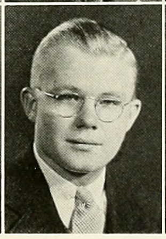
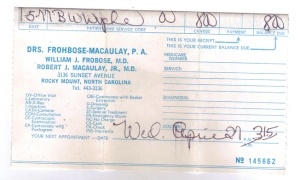
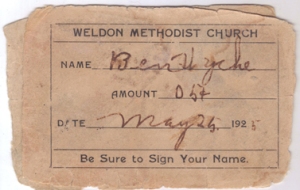
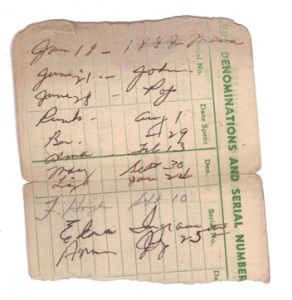
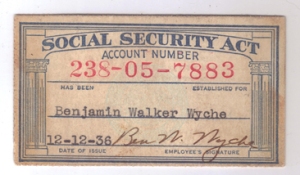
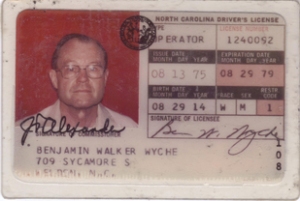
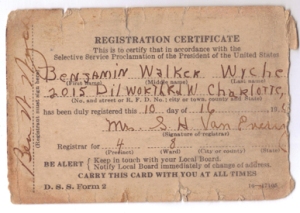
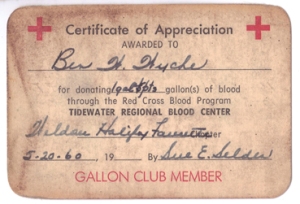
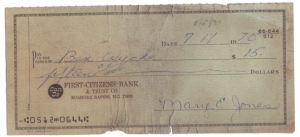
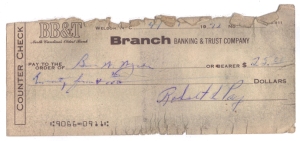
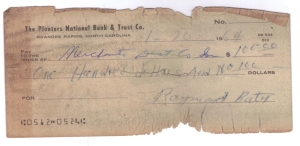
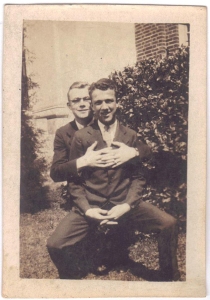
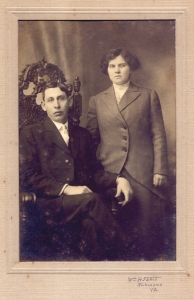
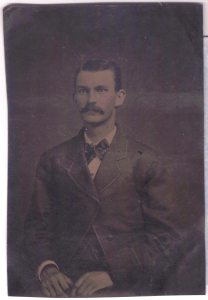
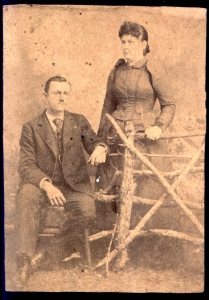
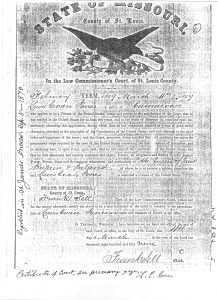
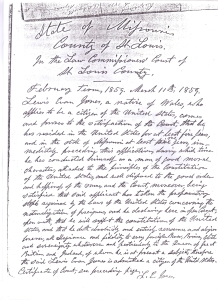
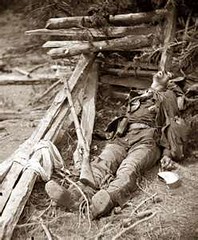

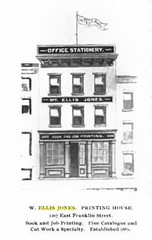






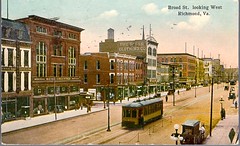
You must be logged in to post a comment.